Foods to Try
Best Restaurants in Kigali
Volcanoes National Park
Nyungwe Forest National Park
Akagera National Park
Gishwati Mukura National Park
Best Time to Visit
Weather & Climate
Rwanda Airports Guide
Day Trips From Kigali
7-Day Itinerary
Things to Do in Rwanda
Things to Do in Kigali
Top Museums in Kigali
How to Go Gorilla Trekking

How to Go Gorilla Trekking in Rwanda
:max_bytes(150000):strip_icc():format(webp)/DSC00412-5b73daf7c9e77c0057ca2198.jpg)
ksumano / Getty Images
What to Expect
What to wear, how to get a permit.
- How to Budget
Other Attractions
Best time to go.
- Getting There
The African continent is renowned for its once-in-a-lifetime animal encounters. Few are more memorable (or so frequently featured on traveler bucket lists) as coming face-to-face with mountain gorillas in their natural environment .
There are approximately 1,000 mountain gorillas left in the wild, divided across two distinct populations. The first lives in Uganda’s Bwindi Impenetrable National Park . The second, larger population lives in the Virunga Mountains, at the point where the boundaries of Rwanda, Uganda, and the Democratic Republic of the Congo (DRC) meet. Each country has its own national park in the Virungas. Respectively, these are Volcanoes National Park, Mgahinga Gorilla National Park, and Virunga National Park.
Of these, Rwanda's Volcanoes National Park is considered the best option for gorilla trekking. It is a safer country to visit than the DRC, with more developed infrastructure and a better choice of reliable tour operators. Meanwhile, Uganda’s Mgahinga Gorilla National Park is much smaller than its neighbors, and home to just one habituated gorilla troop. This means that there are far fewer trekking permits available, and, because the troop often moves across the border, there is a chance of missing the gorillas completely.
Although Rwandan permits are considerably more expensive than Ugandan ($1,500 versus $700), they sell out less quickly, making it more likely that you will be able to travel on your chosen dates. Additionally, a day trip from Kigali is possible, which cuts down on extraneous costs.
From the best time to go to our favorite tours, here's what you need to know to plan your gorilla trekking adventure in Volcanoes National Park.
Volcanoes National Park has 12 gorilla troops that have been habituated for tourist encounters. Each one is made up of at least one alpha male, or silverback, and his harem of females and juveniles. Your adventure starts at the park headquarters in Kinigi at 7 a.m., when your group will be assigned to a troop and given a briefing on rules for visiting the gorillas. These rules include maintaining a distance of around 22 feet, and not hiking when sick with any contagious diseases that could infect the gorillas. Basic rules for safe interactions will also be outlined, from not using flash photography to keeping voices low and movement to a minimum.
Your group will be the only one to interact with your allocated troop on the day of your visit. The maximum number of people in each group is eight, ensuring that the experience is kept as unobtrusive as possible for humans and gorillas alike. As nomadic creatures, gorillas spend their days on the move, foraging for the vast quantity of vegetation required to support their huge size. Because of this, it is difficult to predict exactly where each troop will be from one day to the next, although they tend to stick to a preferred general area. Much of the trekking experience consists of hiking through the misty forest to find them—a process that can take anywhere from 30 minutes to five hours or more. Generally, troops are assigned according to the fitness levels of each group and porters are available to help carry cameras and backpacks.
Once your guide has located the troop, you will spend up to an hour sitting quietly within a few feet of them, watching as they continue to go about their daily routines unfazed by their human visitors. Encounters are strictly kept to this time limit to ensure that each troop is impacted on as little as possible. Gorillas are our closest relatives after chimpanzees and bonobos, sharing 98 percent of our DNA. As such, much of their behavior feels familiar—whether it’s a mother grooming her infant, or juveniles play fighting with one another while the adults forage for food.
The climate in Volcanoes National Park is both cool and wet, so whenever you travel, you should be sure to dress appropriately. This means plenty of layers so that you can stay warm when sitting with the gorillas, but strip off when hiking. It also means waterproof jackets and pants, and sturdy hiking boots or shoes with sufficient grip for slippery, uphill terrain. There are plenty of stinging nettles, so thick-woven clothing and gaiters are also recommended. If you’re susceptible to sunburn, bring sunglasses, a sunhat, and sunscreen for when the sun makes an appearance in between downpours.
With eight people permitted to visit each of Volcanoes National Park’s 12 habituated gorilla troops every day, there are only 96 permits available for any given date. This means that they sell out months in advance and getting hold of one can be quite competitive. Do not wait to book your permit until you are in Rwanda. Instead, book your permit first and then build the rest of your itinerary around it. You can purchase your permit independently through the Irembo government website ; however, the site is in Kinyarwanda and most visitors prefer to have their chosen tour operator navigate the process.
How to Budget
Rwanda is often hailed as the world’s best destination for gorilla trekking. However, it is also the most expensive with permits costing $1,500 per person. Ten percent of this fee goes towards local community initiatives and may also be used to compensate farmers if the gorillas venture onto their land and damage their crops. This helps to keep the relationship between conservationists and residents amicable, as well as increase local support for gorilla conservation.
In addition to the trekking permit, you will need to consider the cost of flights, accommodation, transportation, meals, tips, and optional extras. Often, the easiest way to budget is to book an all-inclusive package with a company that specializes in gorilla safaris. This way, you will know the total cost well in advance and have plenty of time to save up without worrying about unexpected expenses. Having said that, package prices vary considerably depending on the style of accommodation and other variables. Read on for our pick of the best package tours for all budgets.
With trekking permits costing $1,500 per person, there’s no such thing as a cheap Rwandan gorilla trekking tour. However, locally owned company Katona Tours caters to budget travelers by offering an in-and-out experience that starts and ends in Kigali on the same day (eliminating the cost of accommodation in Volcanoes National Park). $1,850 per person includes transportation in a 4x4 safari vehicle, the services of an English-speaking guide and driver, your gorilla trekking permit, park entrance fees, and lunch at the local Muhabura Hotel.
For a more immersive experience, consider extending your stay in Volcanoes National Park with this four-day itinerary from Intrepid Travel . It also begins and ends in Kigali, starting with a tour of the Kigali Genocide Memorial. Then, you’ll sleep overnight at a lodge on the outskirts of the national park before heading out on your gorilla trekking adventure the following day. The third day is reserved for other park activities, including visiting the Karisoke Research Center and tracking golden monkeys. On the last day, you'll head back to Kigali for a walking tour of the city. $4,835 includes transportation, accommodation, most meals, your trekking permit, and both activities in Kigali.
South Africa-based luxury travel company andBeyond offers luxury gorilla trekking packages starting from $5,504 per person. Lasting five days and four nights, the tour starts and ends in Kigali and includes one day dedicated to tracking the gorillas and a second reserved for tracking golden monkeys (at an additional cost). Accommodation is included and involves stays at the luxurious Kigali Serena Hotel and Virunga Lodge. Also covered are your airport meet-and-greet, gorilla permits, most meals, soft and alcoholic drinks, scheduled transfers (including the exclusive use of a luxury vehicle), a nature walk, and a complimentary post-hike massage.
Although gorillas are top of the wish list for most visitors, a hike through Volcanoes National Park also yields an opportunity to spot many other interesting species. These include endangered golden monkeys (of which there are two habituated troops), forest elephants, black-fronted duikers, buffaloes, forest hogs, and more than 200 bird species. Many of the park’s birds are endemic to the Albertine Rift, making them especially sought-after by keen birders.
Also of interest is Karisoke Research Center , where legendary primatologist Dian Fossey began her 18-year research project on mountain gorillas in 1967. It’s also where she wrote her seminal book, "Gorillas in the Mist," made many discoveries about gorilla behavior that continue to form our understanding of the species today, and was eventually murdered in 1985. Today, visitors can tour the research center to learn more about the valuable work being carried out by resident scientists, as well as conservation initiatives put in place to ensure the future of the park’s gorillas. It is also possible to hike to Dian Fossey’s grave.
Due to its proximity to the equator and its high elevation, temperatures in Volcanoes National Park stay consistently cool throughout the year. Expect average daytime temperatures of around 61 degrees F, and chilly nights that can drop as low as 43 degrees F. Rain and mist are also ever-present, although less so in the drier months from June to August. Lighter rainfall at this time of year makes it the best time to visit for gorilla trekking since the terrain is easier to navigate and the gorillas themselves are often more active. October, March, and April are the wettest months and are typically best avoided.
Getting There
For most international visitors, the main port of entry to Rwanda is Kigali International Airport (KGL), located roughly 6 miles east of the Rwandan capital. From there, it’s just over 70 miles and a little under three hours by road to Musanze, the park’s closest town. Then, it’s another 30-minute drive to the park headquarters at Kinigi, from where all gorilla trekking tours depart. Most visitors either hire a car and driver to get to Volcanoes National Park or choose an organized tour with transfers included.
Tourist visas are required for most nationalities and can be purchased on arrival at Kigali International Airport or any land border. You can opt for a single entry tourist visa (priced at $50 and valid for 30 days), or the East African Tourist Visa, which costs $100 but lasts for 90 days and permits entry into Rwanda, Uganda, and Kenya.
Before traveling to Rwanda, remember that the CDC recommends a variety of vaccinations, including hepatitis A, hepatitis B, and rabies . Proof of yellow fever vaccination is an entry requirement if you are traveling from any country where this disease is prevalent. Additionally, malaria medication is recommended for travel throughout Rwanda. Be sure to book a consultation with your physician to discuss which option is best for you.
World Wildlife Fund. "Wild mountain gorilla numbers grow to more than 1,000." Retrieved on December 6, 2021.
Centers for Disease Control and Prevention. "Rwanda." Retrieved on December 6, 2021.
15 Best Things to Do in Rwanda
The Best Places to Go Gorilla Trekking in Africa
Your Trip to Rwanda: The Complete Guide
Akagera National Park, Rwanda: The Complete Guide
Volcanoes National Park, Rwanda: The Complete Guide
The Best Time to Visit Rwanda
Nyungwe Forest National Park, Rwanda: The Complete Guide
One Week in Rwanda: The Ultimate Itinerary
Virunga National Park: The Complete Guide
Uganda's National Parks: The Complete List
The 6 Best Day Trips From Kigali, Rwanda
The Top 12 National Parks to Visit in Africa
Rwanda Travel Guide: Essential Facts and Information
Bwindi Impenetrable National Park: The Complete Guide
Weather in Rwanda: Climate, Seasons, and Average Monthly Temperature
Top 10 Destinations in Africa for a First-Time Visitor

Everything you need to know about trekking with mountain gorillas
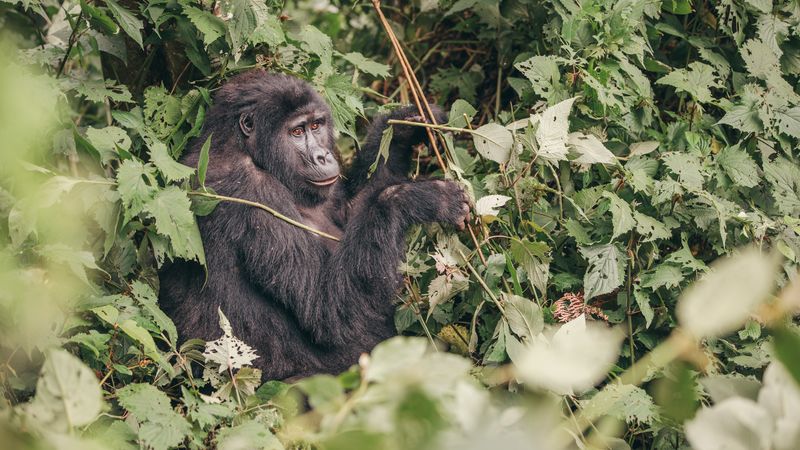
UPDATED: This blog was originally published in August 2016.
A mountain gorilla trek often comes second on travel Bucket Lists to a classic Big 5 game drive in Kruger or Serengeti National Park.
Which is understandable – getting to the gorillas takes more effort, more time and more expense than a traditional safari. But you know what they say: you get what you pay for.
Here’s everything you need to know about trekking with mountain gorillas in Rwanda and Uganda:
Where do the mountain gorillas live?
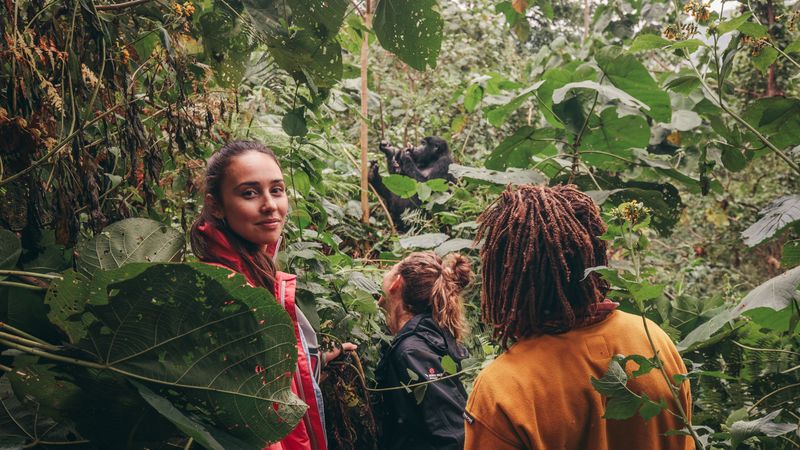
The ultimate wildlife experience.
There are only two populations of mountain gorillas left in the world. The first lives in the Virunga volcanic mountains of Central Africa, with groups scattered between Uganda, Rwanda and the Democratic Republic of the Congo. The second population lives deep in Bwindi. (Our tours visit Rwanda’s Volcanoes National Park and Uganda’s Bwindi Impenetrable Forest).
According to results released in May 2018, the mountain gorilla population living in the Virunga mountains has grown— from 480 in 2010 to 604 as of June 2016. Combined with a separate mountain gorilla population living in Bwindi Impenetrable National Park in Uganda, this brings the number of mountain gorillas to more than 1,000 individuals. The rise in numbers follows the introduction of park guards, veterinary care, community support projects and regulated tourism.
Despite the good news, that still puts them on the Critically Endangered list (two classifications away from completely Extinct).
JOIN US ON A 9-DAY TREK TO EXPERIENCE REMARKABLE RWANDA AND THE GORILLAS OF UGANDA
What options do I have to have to see the mountain gorillas?
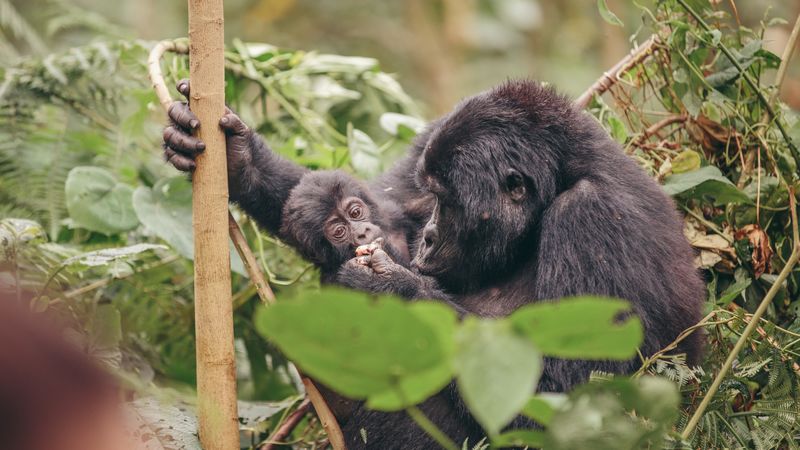
A mother and baby – incredible!
The first thing to appreciate is that visiting mountain gorillas on a group tour can be quite expensive (going solo is often even more so). These animals exist in extremely remote locations, in countries not known for their tourist infrastructure, which means the logistics of a gorillas visit are a challenge in themselves. Tour groups must also pay permits for expert guides to lead them through Virunga, Bwindi or Volcanoes National Park.
Like most wildlife encounters in Africa, the experience is completely worth it, and we’re yet to hear anyone come back from a gorilla visit underwhelmed, but it’s just something to keep in mind. It’s also worth noting that the cost of a permit to trek in Rwanda’s Volcanoes National Park doubled in early 2017, which makes a trekking permit in Uganda around a third of the price, and a far more economical option.
SUBSCRIBE TO INTREPID’S NEWSLETTER FOR TRAVEL INSPIRATION, COMPETITIONS & MORE
Uganda Gorilla Shortbreak: Basix – A compact 4-day itinerary from Kampala to Uganda’s Bwindi Impenetrable Forest. You’ll be staying in basic, pre-erected tents, and basic hotels which makes this is an economic option if you’re passing through Uganda on your own.
Uganda Gorilla Shortbreak: Original – A compact 4-day itinerary from Kampala to Uganda’s Bwindi Impenetrable Forest. You’ll be staying in original style lodges and hotels. This is a fantastic trek add-on to a larger itinerary.
Mountain Gorillas of Rwanda: Comfort – An equivalent 4-day shortbreak, this time in Rwanda’s Volcanoes National Park. This one comes with an optional ‘Gorillas in the Mist’ trek to visit the grave of Dianne Fossey, as well as her old research station, deep in the jungle.
Gorillas & Game Parks – A more comprehensive 16-day itinerary, with an overland truck and a dedicated Intrepid leader. It combines gorilla trekking in Uganda with safaris in the Masai Mara and Queen Elizabeth National Park. This one is for the serious wildlife buffs!
Remarkable Rwanda & Gorillas of Uganda – The condensed 9-day itinerary will see you travelling by 4×4, local bus, and bike with a dedicated Intrepid Leader. Learn about Rwanda’s devastating history with visits to different genocide museums, cycle around the Twin Lakes of Ruhengeri, before trekking Gorillas in Uganda.
UPDATE ON GORILLA TREKKING IN RWANDA: Maximum 96 gorilla tracking permits are available each day. As of May 2017, the Rwandan Development Board increased the costs of the gorilla permits from US$ 750 to US$ 1,500 per person, for a one-hour visit. The new prices aim to strengthen conservation efforts and support the development of local communities. More info here .
EXPLORE OUR RANGE OF SMALL GROUP WILDLIFE ADVENTURES NOW
What to expect on your trek
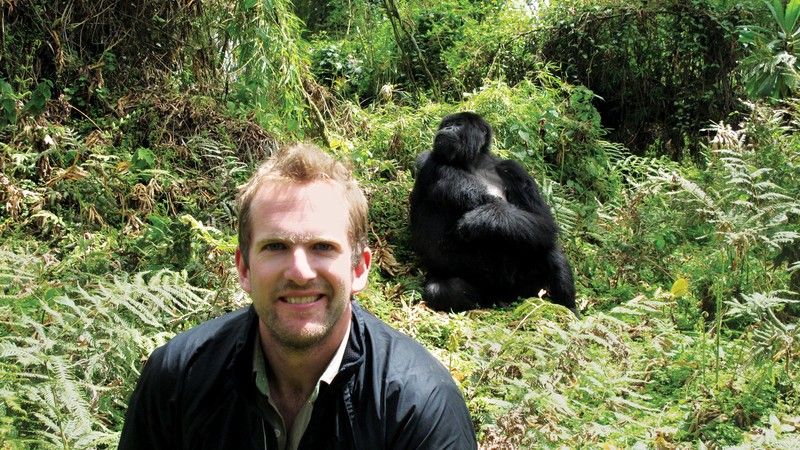
Intrepid’s CEO James Thornton and a new friend in Volcanoes National Park.
It’s important to know what you’re getting into before setting out on a gorilla trek. The good news is, this isn’t Basecamp. The hike through the forest is challenging and tough-going (your guides will often have to machete a path through the ferns that clog the undergrowth), but it’s within reach for anyone with a reasonable level of fitness. You will get muddy though. And sweaty. Beneath the forest canopy the humidity is very high, and it’s a good idea to bring a canteen of fresh water to hydrate as you go.
If you are particularly concerned about the terrain, consider hiring a local porter. The porters will carry your bag, and help to you navigate some of the steeper, or trickier sections of the trek. In fact, hiring a porter on a gorilla trek is a common practice by travellers of all ages and abilities. Not only does it make the trek easier for you, but you’re also providing a valuable source of employment for locals. The minimum cost of hiring a porter on a gorilla trek in Bwindi is $20USD, or $10USD in Virunga. Of course you can choose to provide a tip in addition to that.
Eventually, after bush-bashing your way through the scrub, you’ll come across a gorilla family, peacefully playing in a forest clearing. Your trekking guides and rangers will have prepared you for what to expect. There’s no direct interaction with the gorillas (unless one moves past you), but you should get pretty close. You’ll have a good 45 minutes to an hour to just sit and observe these animals in their natural habitat. We promise it’s something you’ll never ever forget. For a really good account of a gorilla visit, check out this blog we published .
RELATED: WHY FEAR CAN BE YOUR GREATEST TRAVEL ASSET, ACCORDING TO ONE FEMALE TRAVELLER
Mountain gorilla habitat
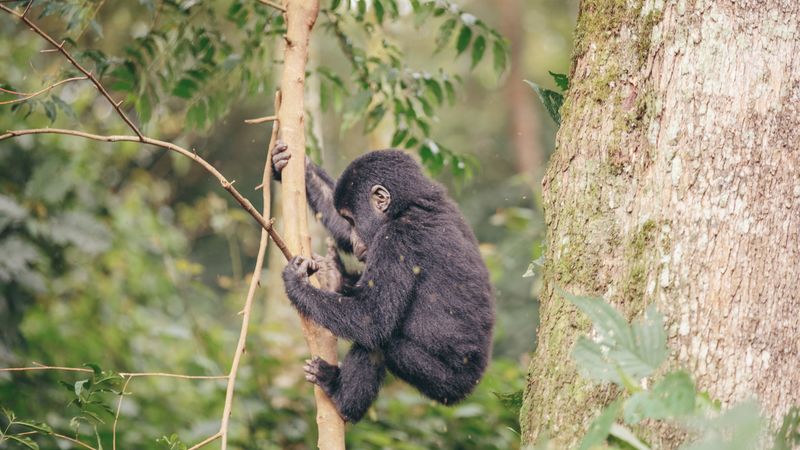
A baby plays in the trees.
Mountain gorillas live way up in the cloud forests, ranging from an altitude of 2200 metres to 4300 metres (a not insignificant height – you may feel a little short of breath. Remember to let your guide know if you feel a headache coming on).
The vegetation on the lower slopes will be dense, often a mix of bamboo, ferns and galium vines. As you climb, the undergrowth should thin out a bit. The zone where the gorillas live is misty, damp and (depending on the time of year) can be a bit cold. Mountain gorillas move around depending on the season, spending time in the subalpine regions to feed on senecio trees during certain times of the year.
RELATED: HOW TO CHOOSE YOUR IDEAL AFRICAN SAFARI
What to pack for your gorilla trek
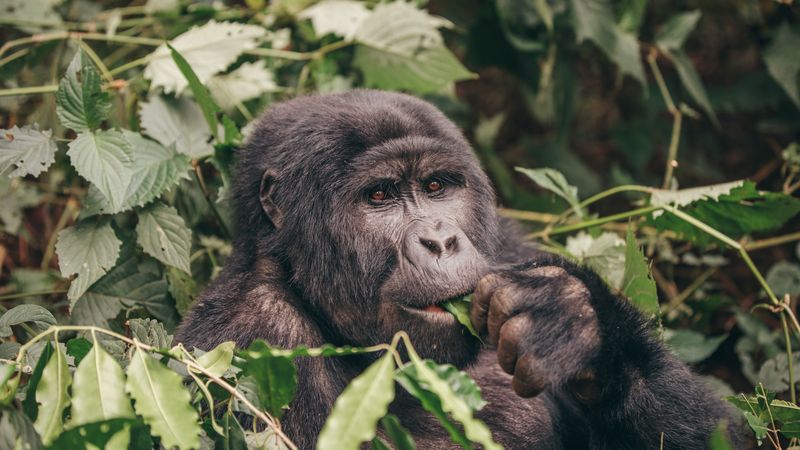
Enjoying a snack.
Boots – Essential. A good quality pair of hiking boots from a store like Kathmandu will serve you well. They’re expensive, but so are your ankles when they break. Don’t risk it with a cheap pair of sneakers.
Gloves – During the trek you might be grabbing trees, branches and vines, and your hands can get a bit scratched and generally beaten up if you’re not careful. Pack a tough old pair of gardening gloves. They might look a bit lame, but you’ll be glad you brought them.
A light rain jacket – Bwindi and Virunga are both tropical rainforests, and there’s a good chance of rain almost year-round. Pack a light-weight poncho or rain jacket that you can roll up in your bag and bring out if necessary.
Energy snacks – The trek to the mountain gorillas isn’t impossible, but it is tough. Energy snacks like nuts, dried fruit, chocolate or power bars are a great idea. Just remember to take any rubbish with you as you go.
Water – Avoid buying plastic water bottles while you’re in Uganda or Rwanda. They’re terrible for the environment. Bring a reusable canteen (preferably with a purifying filter built in) or a pack of filtration tablets. You’ll need to drink a lot during the trek.
Long pants and shirts – It’s best not to expose too much skin during the jungle trek, and remember to tuck your trousers into your socks – you really don’t want safari ants crawling up there.
Want to come face-to-face with Africa’s mountain gorillas? Check out our gorilla small group treks .
Feeling inspired?
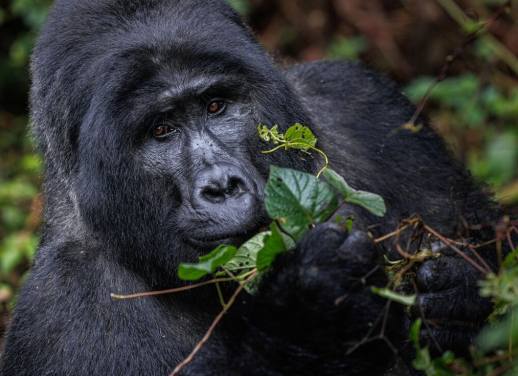
James Shackell
I was born in 1987 and aged from there. I like the sound of pop-rocks and dislike the sound of styrofoam. The length of my forearm is approximately the same as the length of my shin. My favourite Beatle is Ringo. I believe that junk food tastes so good because it’s bad for you and that your parents did the best job they knew how to do. If Johnny Cash wrote a song about my travels it would be called ‘I’ve been to several places but still have many other destinations on my to-do list, man’. Sometimes I have trouble finishing sen
You might also like
The 7 best places to go on a..., 5 reasons to visit sri lanka in the..., why 2024 is the best year to see..., yellowstone vs yosemite: which national park to visit, 6 unique experiences you can have in el..., from delhi to udaipur, here are the five..., cinque terre vs amalfi coast: which destination to..., love at first bite: 10 famous sandwiches from..., galapagos or madagascar which unique destination should be..., central vs south america: how to plan your..., 4 reasons you should take a road trip....
How To See Gorillas In Rwanda – Complete Guide
UPDATED 01 AUGUST 2021

RWANDA TRAVEL GUIDE AND ALL YOU NEED TO PLAN A MOUNTAIN GORILLA TREK
“In all my travels, I’ve never seen a country’s population more determined to forgive, and to build and succeed than in Rwanda.” Rick Warren
We went to Rwanda for the mountain gorillas. We left with our pre-conceived notions about Sub Saharan Africa in tatters.
The primates are magnificent. The story of Rwanda’s climb out of the dark and devastating chasm of genocide to be counted among the safest and most progressive countries in the developing world is no less impressive.
If safety concerns are holding you back from embarking on that bucket-list mountain gorilla trek, you should know that Rwanda ranks 31 on the WEF Safety and Security index 2019 .
Our visit was an add on to our longer Tanzania itinerary, and one that we dithered over due to the high cost. We are so glad we took the plunge. Then again, our gorilla safari permits cost us exactly half of what it would today.
The subject of human intrusion into the habitat of this endangered species is a real worry. It is my understanding that the pros of wildlife tourism – properly handled – far outweigh the cons.
The gorilla story, as also the success of tiger conservation in India, are cases in point. Community development is critical in anti poaching efforts and poor countries are hugely dependent on tourism dollars to fund them.
There have been reports of Coronavirus lockdowns and the attendant loss of livelihoods increasing instances of poaching across Africa and Asia. Proof that wildlife tourism and conservation are interdependent even with allowances for corruption.
This guide is focused on the mountain gorilla experience with a link to my post on the genocide. I’ve tried to include every little detail that you’ll need to get up close to those gentle giants of the wild.
THINGS TO DO IN RWANDA
The two featured stories linked to below cover two primary things to do in Rwanda:
1. A Gorilla safari in the Volcanoes National Park in the Virunga Mountains.
2. A city tour and visit to the Kigali Genocide Memorial.
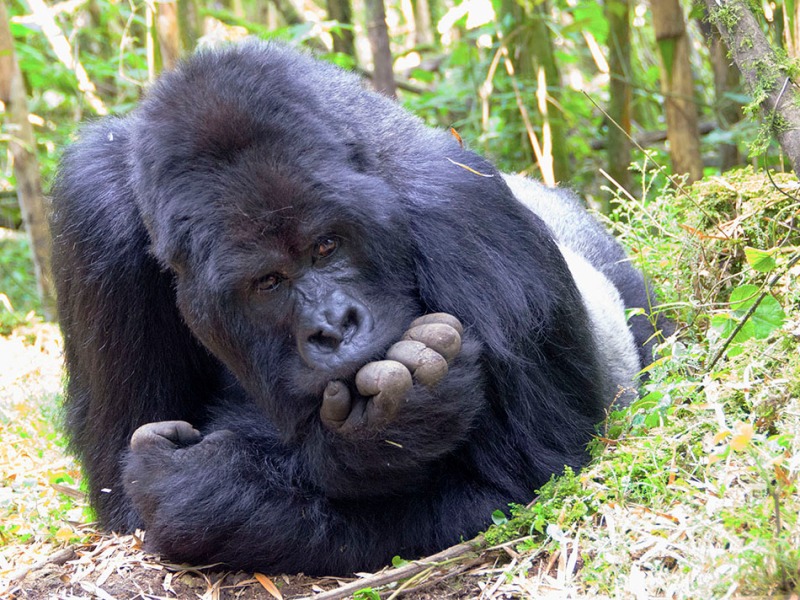
Rwanda – Rubbing Shoulders With Silverbacks!
All about our trek with mountain gorillas in Rwanda. One precious hour with the silverbacks that is our most memorable Rwanda travel moment.

The Extraordinary Renewal Of Rwanda
The Kigali Genocide Memorial is a powerful tribute to the victims of genocide. It is also a testament to the tenacity of a people and their remarkable rise up from that dark and devastating chasm into hope and renewal.
MORE THINGS TO DO IN RWANDA
As an add on to a Tanzanian safari, we just had three full days dedicated to the silverbacks. Rwanda has so much more to offer. Allow ten to twelve days to experience most of it. This is a good ten day itinerary.
- Track more primates, including chimpanzees, in Nyungwe Forest National Park , one of the oldest rain forests in Africa. It is also home to 1,068 plant species, 140 orchid, 320 bird and 120 butterfly species.
- Visit a tea plantation. We were surprised by the excellent quality of Rwandan tea served at the Serena hotel in Kigali.
- Visit the reconstruction of a traditional king’s ‘palace’ in Nyanza.
- Visit the Ethnographic museum in Huye .
- Kayak on lake Kivu at Gisanye
- Go on an overland safari in Akagere National park where the big 5 of Africa have been successfully re-introduced.
- Visit Dian Fossey’s Research Centre and grave at Karisoke .
- Tour the Musanze Caves .
OUR RWANDA ITINERARY
Day 1: Arrival Kigali. Transfer to hotel. Overnight Kigali. City tour including visit to genocide museum. Day 2: Drive (approximately two hours) north to Ruhangeri. View twin lakes. Overnight Ruhengeri (Musanze) Day 3: Gorilla trekking day! Visit to Musanze market. Return to Kigali late afternoon / early evening. Overnight Kigali Day 4: Dawn departure to KIG airport to board Coastal Air flight to Arusha, Tanzania.
The gorillas were undoubtedly the highlight. The genocide memorial is unmissable for the insight it provides into Rwanda’s recent history. The two other things that stood out in our all too brief itinerary were the drive up to the twin lakes of Burera and Ruhondo and the market in Musanze where we got to interact with a few locals.
WHAT WE’D DO DIFFERENTLY
I would have liked to have at least one extra day in Ruhangeri to be able to visit Dian Fossey’s grave in Karisoke. It’s a 30-minute drive from the park headquarters and then two or three hours hike (one way) through the forest
Most people – with deeper pockets than ours – reserve two mornings for the Gorilla safari and one afternoon for the golden monkeys (also in the same park). We would have liked to do the same but at $750 per person (at the time) for the gorilla trek and an extensive Tanzanian safari to follow, we settled for the one night in Ruhangeri. We were fortunate to have gotten to the gorillas early on our safari day.
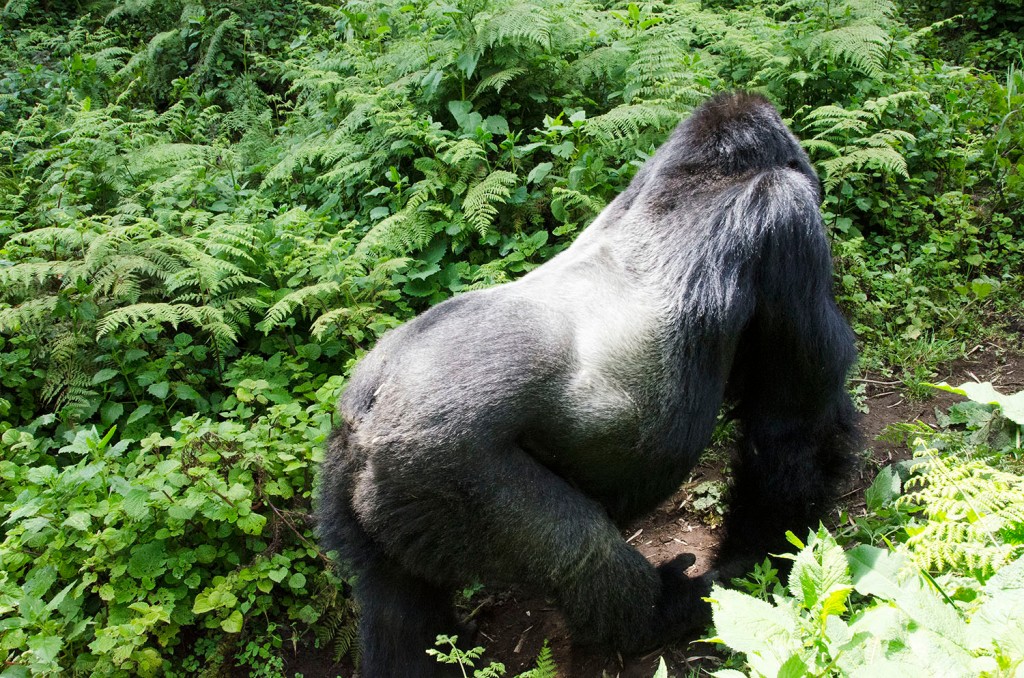
GORILLA TREK INFO
Gorilla permit cost – rwanda or uganda.
The most expensive part of a Rwanda trip is the gorilla safari permit that has now been doubled to US$1500 per person . Visitors planning to visit all three national parks can avail the discounted price of US$1050.
The costs are geared to keep visitor numbers low while aiding their much lauded conservation and community development efforts whose results have indeed been spectacular. But it is a huge blow to low budget wildlife enthusiasts.
If gorilla tracking is your primary focus, costs in Uganda are much cheaper at US$700 . The longer distance to be covered between Entebbe and Bwindi National Park (it takes nine hours by road as opposed to two hours from Kigali to Musanze) that entailed an extra night’s stay made it less favourable for us in 2014 when the difference was around US$150 per person. It might be worth considering now.
You can also fly from Entebbe to Bwindi in just over an hour. Remember to factor in the extra costs. The treks in Uganda are said to be relatively more arduous, although that will depend more on luck and the gorilla family you are allotted. Uganda also offers a Gorilla Habituation Experience which costs US$1500 but you get to spend four hours with the gorillas vs one hour on a regular trek in both countries.
GORILLA TREK DETAILS
Gorilla trekking is highly regulated keeping in mind the safety of visitors as well as the health of the silverbacks.
- Only twelve families are habituated to humans. A maximum of 8 visitors are allowed to visit a single family of habituated gorillas per day in oder to minimise contact and risk of disease.
- Viewing time is limited to one hour.
- Gorilla Trek permits can be purchased directly on the Rwanda Development Board site or through safari/tour operators.
- Permits are limited so you need to book well in advance if your dates are not flexible.
- Minimum age for a gorilla trek is 15 years.
- Once confirmed permits cannot be cancelled, changed or transferred.
- Those showing visible signs of illness after having travelled all the way to Ruhengeri. They will not be allowed to join a trek and will be offered a 50% refund.
- Visitors who fail to track gorillas the whole day as a result of the Gorilla group’s movement shall be given another chance or receive full refund on their permit.
- However, those who would have tracked the whole day and failed to make contact with a gorilla family for whatever reason will be refunded 75% of the tracking fee.
- You’ll need to indicate your preferred type of trek – Easy, Medium or Hard – in advance. Gorilla families will be allotted accordingly.
- It is a moderately high altitude trek, so expect to get slightly breathless in the steeper parts.
- If on a tour, your driver will drive you to the briefing point at the RDB Tourism & Conservation offices in Kinigi. Registration time is 7am. You’ll be served beverages and biscuits and get to watch an Intore dance troupe perform.
- The driver will then drive you to the departure point and wait there for your return.
- If you aren’t on a tour and are not self driving, your hotel will be able to hire transport. Cost will depend on distance to the park.
- Each group will be accompanied by a guide, some armed guards and several trackers who’ll help hack through the jungle. A group of forward trackers stay connected via radio. You can also hire porters for a small fee.
GORILLA VIEWING RULES:
- Opt out if you have the slightest sign of a cold or flu coming on. You’ll get a 50% refund if you show visible signs.
- Maintain a distance of 7 meters (about 22 feet) from the gorillas. And do not touch any of the gorillas even if they approach you.
- Do not eat or drink around the gorillas. And do not spit in the park. Use tissues and bring them back!
- Cover your mouth and turn away from the gorillas if you feel the need to cough or sneeze.
- Do not talk loudly in the presence of the gorillas.
- Turn off your flash and avoid sudden movements so as not to startle them.
- Staring is rude even in the wild. If a gorilla, especially the lead male, approaches you, stay still and adopt a submissive crouch with eyes downcast.
- Respect the fact that you are a guest of the gorillas. Do not leave behind wrappers or litter of any kind.

THINGS TO KNOW BEFORE YOU GO TO RWANDA
Rwanda fast facts.
- Capital : Kigali
- Currency : Rwandan Franc – RWF ( Latest exchange rate. )
- Language(s) : Kinyarwanda, French, English and Swahili
- Population : 13 million
- Area: 26,338 sq km (10,169 sq miles)
- Electricity Voltage: 230V
- Electricity Sockets: Type C and J
BEST TIME TO TRAVEL TO RWANDA
Rwanda enjoys temperate weather with temperatures ranging from 15°C (59°F) to 30°C (86°F). The Virunga mountains are the coldest. Kigali is in the middle with average temperatures around 21°C (70°F).
Primate tracking in Rwanda is possible year round. The dry season between June to September and mid December through Jan is recommended for gorilla tracking. The wet season through March and April apparently affords better Chimpanzee sightings.
GETTING TO RWANDA
Many American, European, Middle Eastern and Asian airlines operate flights to Kigali. We flew Qatar Airways from Chennai to Kigali and returned from Dar es Salaam.
RwandAir is the flag carrier that connects many African destinations. We flew onward to Arusha (in Tanzania) with Coastal Aviation.
Search for the best flight connections on Skyscanner .
VISA REQUIREMENTS FOR RWANDA
Since 2018, travellers from most countries are eligible for free visa on arrival for stays up to 30 days. Citizens of countries not on the prescribed list can also avail visa on arrival for a fee ranging from $30-$100. Credit cards are accepted. Check latest visa regulations on the Rwanda immigration website .
Travellers wishing to visit Rwanda, Kenya and Uganda simultaneously can apply for the East Africa Tourist Visa (EATV) on arrival. It can also be availed online, pre-departure, at this Rwanda EGovt services portal or from Rwanda Diplomatic missions abroad. If acquiring the EATV visa before travel, your first entry point must be the country through which you applied for the visa. The East Africa Tourist Visa costs US$100, is valid for 90 days and is multiple entry (if staying within the three countries).
VACCINATIONS
Rwanda is yellow fever free, so a yellow fever vaccination certificate is not required for travellers coming from yellow fever non-endemic countries and those without an active transmission outbreak. Check out this list in case you are travelling to or from any of the countries in the endemic list . And please check your home country advisory for travel to Africa.
India requires citizens travelling to Rwanda to be vaccinated against yellow fever and carry an international certificate as proof. Failing to do so might entail institutional quarantine upon your return.
Here’s a list of GOI authorised yellow fever vaccination centers across the country. Some of them only function a few days a week so make sure you book an appointment well in advance. You’ll need to carry your passport. Current charges are ₹300/- per dose. It is valid for ten years.
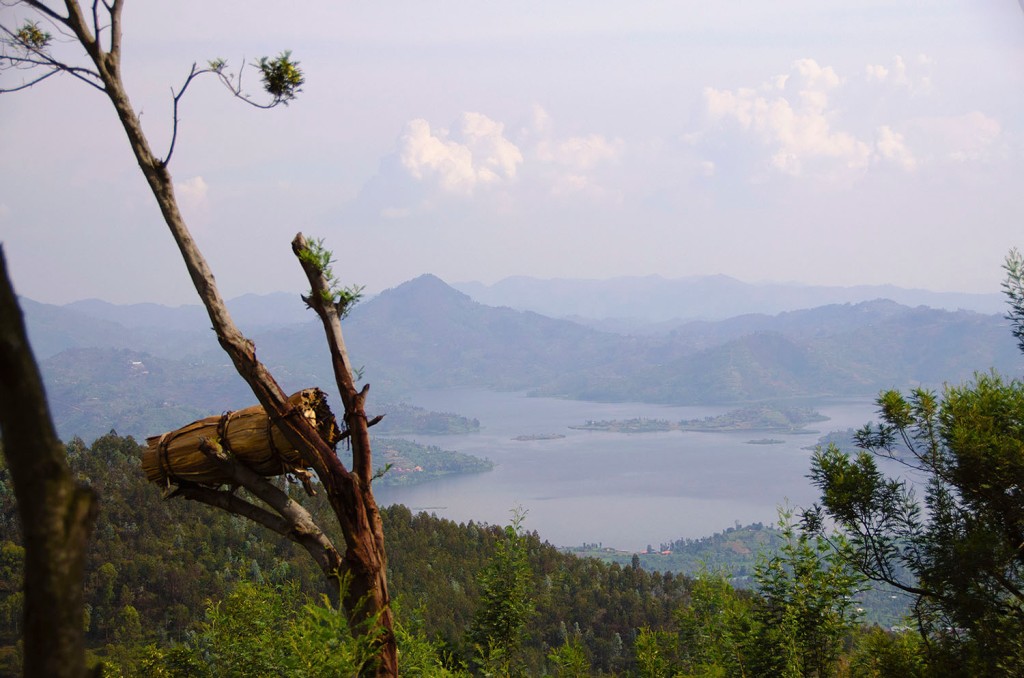
WHERE TO STAY IN RWANDA
Kigali has a variety of mid-range options. We stayed in the Kigali Serena which was pure comfort.
Ruhengeri/Musanze is limited in the mid price range. It’s either over the top – think US$1500 – US$3000 per person per night! – or very basic.
We opted to stay in Mountain Gorillas lodge in Kinigi , close to the Volcanoes Park entrance. It is rather basic for the price, and food, at the time, was nothing to write home about. But the setting is picturesque and cottages large and comfortable, if a bit cold. They light log fires in the rooms every evening and place hot water bottles in the super comfortable beds. Our request for an electric portable heater was instantly met. All things considered, a solid choice given the limited offering. Going by current reviews it continues to be the most popular mid range option.
The Ingagi Park View Lodge and Tiloreza Volcanoes Ecolodge are new properties that appears to have good reviews.
Amohoro Guest House , owned by people who run a safari outfit of the same name, is a great low budget option close to town.
With the trek fee hike and the burgeoning of several high end properties, Rwanda is clearly positioning itself as a luxury safari destination. If budget is no consideration the Bisate Lodge , Singita’s Kwitonda Lodge , Virunga Lodge , Sabinyo Silverback Lodge and One & Only Gorilla’s Nest are all stunning properties in fabulous settings that will organise transfers and multiple experiences for you.
The Bishop’s House , a beautiful new property located in Musanze town (approx. a 25min ride to the park.) appears marginally less pricey.
Check availability and accommodation options for other towns and parks in Rwanda in Booking.com or Expedia.com
WHERE TO EAT
Most lodges catering to the gorilla trek crowd are all inclusive. A few decent restaurants service those staying in or around Musanze. Pailotte seems to be a favourite.
Kigali has a relatively buzzing restaurant scene. Disclaimer: The restaurant we ate at on our first night is currently closed. We dined at the Serena on our final evening. The following are highly recommended by seasoned traveller friends whose opinions I trust.
- Mocha Cafe – What to order: Hummus topped with meat, Yemeni chapatis, avocado sandwich, Yemeni coffee.
- Repub Lounge – African, Fusion. Request table with view. What to order: Sambaza (fried sardines), Liboke Chicken, Vegetarian Matoke Stew
- Alfa Organics – Vegan – What to order: Wraps, sandwiches, Tofu ‘eggs’, smoothies.

RWANDA TRAVEL TIPS
Getting around rwanda.
We used JK Safaris to work out all the logistics of our trip from booking our hotels and permits to our onward flight tickets. They did an excellent job. Rwanda Eco Tours also comes highly recommended.
You can easily organise a trip independently. Book your gorilla permits well in advance and then get your hotels to organise your transfers. Guides are not really required if you have a knowledgeable English speaking driver.
If on a budget, and hotels are unable to organise transfers, you can hop on a Virunga Express bus to Musanze for under 2000 francs. You can get your lodge to arrange transport to and from the gorilla trek briefing centre in Kinigi next morning. Read entry above for trek details.
Self-driving around Rwanda will require an international driving licence. Most of the main roads are well paved but the smaller rural roads are not and can get pretty messy during the rains.
Although there are many car rental companies that charge more or less the same rates, make sure the vehicles are roadworthy and the air conditioning in order. You’ll need to allow plenty of time to change vehicles if it does not meet your standards. Limoz was the company recommended by our Kigali hotel.
Employing a local driver might cost just marginally more than driving yourself and save you much of the hassle.
PACKING ESSENTIALS FOR A GORILLA TREK
Generic travel items including electronics and photography gear are covered in my essential packing list . Listed below are a few things you’ll need for the gorilla trek.
- Sturdy shoes with good grip. Good sneakers are fine but waterproof shoes might be handy in case it rains. Hiking socks that you can tuck your pants into can keep bugs from crawling up your legs. Most hotels and lodges can arrange for gaiters for a small fee. You shoes will invariably be coated with mud. Hotel staff usually offer to clean them upon your return.
- A pair of gloves – gardening gloves are best – will protect your hands from scratches.
- Weather can change from warm and humid to wet and cold, but you’ll have to contend with nettles, so long pants and long-sleeved shirts are a must. Not too thin. I had two layers on. Stick to neutral colours.
- A light jacket and waterproof outer layer in case of rain.
- A small backpack for documents, snacks and water. Carry non messy snacks like sandwiches, energy bars or fruit.
- Tap water is not safe to drink. Filtered water dispensers are common in hotels. While bottled water is plentiful and reasonably priced in most places, carrying refillable water bottles and portable water filters would be eco friendlier options.
GENERAL PRECAUTIONS WHILE TRAVELLING IN RWANDA
- Local currency is preferred but USD is accepted in larger establishments at a pinch. Just make sure you are carrying newish bills dated 2008 or later.
- Have a reasonable cash back-up. It is best to change money in Kigali. Smaller towns might not have ATMs. Credit card usage while apparently on the rise is still limited to larger establishments. You’ll need cash for local markets.
- Non-biodegradable plastic is banned in Rwanda. Any plastic bags in your possession can be confiscated at border checkpoints and might incur fines.
- It is mandatory to buy travel insurance with adequate medical cover before you arrive. We never travel without insurance.
- Taking photographs of military buildings and of army personnel in town is prohibited.
- Drones will need to be pre- registered by a Rwandan national .
- Tipping, usually in cash, is discretionary. Preferably in local currency since exchanging small bills is not an easy task for porters and service staff. A ballpark figure for tipping guides is the equivalent of $10 per day and for drivers around $2 per day.
- Homosexuality isn’t illegal, but it isn’t widely accepted either. LGBT travellers are advised discretion.
- The genocide is a sensitive subject. Be respectful and refrain from joking about it or bringing it up in irrelevant conversations.
ESSENTIAL READING
Explorers & Conservationists Of The Virunga Volcanoes (PDF EBook) A Good Man In Rwanda (BBC Story) Portraits of Reconciliation (Photo Essay) The Triumph Of Evil (Reports & Interviews) Left To Hell (Book)
RWANDA ON YOUR RADAR? 📌 PIN FOR LATER

REMEMBER TO STAY SUBSCRIBED SO YOU NEVER MISS A NEW GUIDE
This is not a sponsored post. The Urge To Wander is part of the affiliate programs of some of the resources mentioned on these pages and will earn tiny commissions from qualifying purchases without any extra cost to you. Disclosure policy .
LIKE THIS? PLEASE TELL YOUR FRIENDS
- Click to share on Facebook (Opens in new window)
- Click to share on Twitter (Opens in new window)
- Click to share on Reddit (Opens in new window)
- Click to share on WhatsApp (Opens in new window)
- Click to email a link to a friend (Opens in new window)
- Click to share on LinkedIn (Opens in new window)
- Click to share on Tumblr (Opens in new window)
- Already have a WordPress.com account? Log in now.
- Subscribe Subscribed
- Copy shortlink
- Report this content
- View post in Reader
- Manage subscriptions
- Collapse this bar

How to See Silverback Gorillas in Uganda and Rwanda
Use these tips and list of recommended tour operators to plan a trip to see the famed silverback gorillas in uganda or rwanda..
- Copy Link copied

There are only about 1,000 mountain gorillas, like this one, left in the wild.
Photo by Shutterstock
If you talk to someone who has been fortunate enough to visit the mountain gorillas of Rwanda and Uganda, you’ll be treated to an enthusiastic, if not rhapsodical, explainer on why the experience is both magical and moving.
To be sure, trekking through emerald rain forests searching for one of humankind’s closest relatives is nothing short of spectacular. It’s also rare.
Today, only about 1,000 mountain gorillas are left, making the species critically endangered. The sole way to see them ( there are none in zoos ) is by trekking in certain East African national parks (Volcanoes National Park in Rwanda, Virunga National Park in the Democratic Republic of Congo, and Bwindi Impenetrable National Park and Mgahinga Gorilla National Park in Uganda). That trek also needs to be with a certified guide for your protection and the protection of the gorillas. From costs and permits to tour providers who can organize it all, here is how to plan a gorilla trekking trip.
How much does it cost?
The price for a full tour, including permits, guides, lodging, and additional add-ons can vary wildly, but expect to spend per person around $1,000 on the low end and $15,000 on the high end for a gorilla trek. Prices can vary depending on if which country you’re trekking in—permits are $700 per person in Uganda but $1,500 per person in Rwanda—your accommodation type, the tour provider you select, and whether there are other excursions planned for the tour (like additional treks or safaris).
The permit price helps the countries with protection and conservation efforts—particularly important, considering the mountain gorillas are critically endangered. Generally speaking, 15 percent of the money collected from gorilla permits goes to the government, 10 percent to the local communities, and 75 percent to gorilla conservation.
Most operators include the price of the permit in the overall tour, but be sure to double-check with your company. At the very least, your tour should include lodging and meals.
What is likely not included is the tip for the guide and the porter (should you choose to use one). For guides, $25 per traveler is recommended. For porters (someone who carries your backpack and helps provide an extra hand when crossing trickier parts of the forest, like going up muddy hills or over large fallen trees), the going rate is a minimum of $15. Even if you’re fit and aren’t carrying much, most guiding companies recommend getting a porter. Although $15 may not seem like much to you, the sum is hugely important to them. It also helps the locals benefit from ecotourism, which in turn shows them the value of protecting the gorillas. Some of the porters are actually former poachers who have come to realize that there’s greater value in conservation.

Sometimes trekkers will follow gorillas as they move through the forest and other times, they can sit and watch them relax.
Photo by Bailey Berg
When is the best time to see the gorillas in Rwanda and Uganda?
While it can be argued that there is no bad time to come face-to-face with these incredible animals, certain months are better than others—specifically during the dry seasons of December through February and June through August. Heavy rains throughout the rest of the year can make trekking trails, which can have steep slopes, muddy and slippery. Those are not ideal conditions for an all-day outdoor excursion. That being said, it’s easier to get permits during the low season.
If you’re planning to travel during peak season (June–August), it’s good to book as far in advance as possible, as there are only eight permits permitted each day for each habituated gorilla family (meaning they’re used to seeing humans). There are a total of 104 daily permits in Uganda and 80 in Rwanda.
How long are gorilla treks?
No two gorilla treks are the same. It can take anywhere from 30 minutes to 8 hours to find a family in the rain forest, and once there, visitors are allowed one hour with the gorillas.
What is the difference between gorilla trekking in Rwanda and Uganda?
While both Rwanda and Uganda offer fabulous gorilla treks, there are a few small differences to consider when deciding which country to visit.
One of the big draws of going to Rwanda is how close Volcanoes National Park is to Kigali International Airport—it’s about a two-hour drive. If you’re short on time, it may be the better option. In Uganda, it’s about nine hours from Entebbe International Airport to either Bwindi Impenetrable National Park or Mgahinga Gorilla National Park. It is also possible to fly into Kigali and cross the border by land into Uganda—Mgahinga National Park is just on the other side of the border, about four hours away.
Gorilla families
In Rwanda, you can only see mountain gorillas in Volcanoes National Park, where there are currently 10 habituated gorilla families , ranging from 11 to 33 members. The gorillas here are the descendents of those Dian Fossey first studied (specifically the Susa family, which is also the largest group and one of the hardest to track). In Uganda, it’s possible to see gorillas in Bwindi Impenetrable National Park, where there are 12 families ranging from 9 to 26 members, and Mgahinga National Park, where there is only one family of nine gorillas (though it does have the highest percentage of silverbacks per family, with four). Because there are more families in Bwindi, it’s usually easier to get permits for there.
Trekking and difficulty
As for the actual trekking, Rwanda is considered less steep and slippery than in Uganda, but it is at a higher elevation, which can be challenging.
Additional experiences
As of February 2022, guests can visit the Ellen DeGeneres Campus of the Dian Fossey Gorilla Fund before or after their trek to get a better understanding of the great apes. The campus includes three main buildings—a research center, education center, and a gallery where visitors can learn about the gorillas and Dian Fossey—plus housing for 30 visiting students and researchers.
What to expect on a gorilla trek
Even if you’re trekking during the dry season, remember that it is a rain forest and there’s still a possibility of a downpour. Expect the trails to be fairly muddy. It’s a good idea to wear hiking boots with ankle support and knee-high gaiters or rainboots (the latter is what all the guides wear) to keep your socks dry and your feet more or less blister free. Also be sure to pack a raincoat.
On the day of your gorilla trek, you and everyone else with a permit will meet at a staging area. Here you’ll be put into groups and assigned a family to trek to. If you have mobility issues, now is the time to let the guides know—they typically try to appoint the most fit with the gorilla families that are the most challenging to reach, while those who may need to move at a slower pace are assigned to families easier to find. This is also when you’ll be briefed on safety measures.
From here you’ll go to the park entrance, where you’ll be able to hire a porter.
Trekking for gorillas often means hours of hiking through dense forest on steep, narrow paths, always behind your guide. Earlier in the day, groups of trackers set out to find the various families. During your trek, the guide will be in constant communication with the trackers to assess where they gorillas may be heading and determine the best spot to try to meet them.
Once your group finds your gorilla family, you have one hour to spend with them. During that time, you may observe them looking for and eating food, playing, sleeping, or grooming each other. While the gorillas are gentle, it’s important to keep a safe distance and follow the instructions of your guide. You’re allowed to take as many photos as you wish, as long as you don’t use flash. We recommend setting your camera aside for at least part of the encounter—this is a once-in-a-lifetime experience that goes by all too fast, so try to be present. After your hour is up, you’ll hike back out.

A gorilla photographed munching on vegetation during a trek.
Best gorilla trekking tours
Here are a few companies we recommend if you’re considering booking a trip.
Volcanoes Safaris
Departure dates year-round from $3,975. [email protected], volcanoessafaris.com .
For 25 years, Volcanoes Safaris has led great ape (mountain gorilla and chimpanzee) ecotours from four of its lodges in Rwanda and Uganda. It’s something the company is passionate about—one of its properties, Virunga Lodge in Rwanda , even has a permanent exhibition honoring the primatologist Dian Fossey.
Guests can opt to participate in a four-day trip that focuses on one park and one lodge, or they can do a 6-, 7-, 8-, or 10-day circuit of Volcanoes Safaris lodges to see multiple parks and primate families.
Cox & Kings
Departures are year-round from £5,650 (US$7,086). coxandkings.co.uk .
While the mountain gorillas may be the marquee animal, they’re not the only wildlife encounter you’ll have on Cox & Kings’ nine-night “ Primates of Uganda” safari.
Beyond doing a one-day trek to commune with the mountain gorillas in Bwindi Impenetrable Forest, guests also can see monkeys and chimpanzees at Kibale National Park and Queen Elizabeth National Park (as well as forest elephants, tree-climbing lions, gazelles, hippos, and buffalo). Clients can opt to do a private tour or join a group.
G Adventures
Departures are offered from June to March (no departures in April and May), starting from $4,479. gadventures.com .
Combining some of the most iconic experiences in East Africa, G Adventures’ 12-day Masai Mara & Gorilla Adventure starts with a safari drive in the famous Masai Mara National Reserve to look for the Big Five. From there, it’s off to Kibale National Park for chimps and then Queen Elizabeth National Park to spot primates, warthogs, elephants, and more. The tour wraps with gorilla trekking in Bwindi Impenetrable National Park.
Intrepid Travel
Regular departures June–October, plus select dates in February and April. Prices from $3,922. Intrepidtravel.com .
Intrepid’s six-day Premium Uganda & Rwanda has the Goldilocks seal of approval for those who want something that’s not too short and not too long. And, unlike many other tours, guests have the option to add a second day of trekking to see another gorilla family in Bwindi Impenetrable Forest.
Intrepid also offers longer tours that incorporate time with the mountain gorillas, including Remarkable Rwanda & Gorillas of Uganda (9 days), Premium Uganda, Rwanda & Kenya (13 days), and Gorillas & East Africa Safari (18 days), among others.
Departures year-round, starting at $2,950. go2africa.com .
This Africa-based tour operator offers everything from 5-day hikes that focus on the mountain gorillas of one park to epic 15-day journeys that combine some of East Africa’s most dizzying wildlife experiences (like gorilla trekking, viewing the Great Wildebeest Migration, and scanning the horizon for Africa’s Big Five at Ngorongoro Crater).
Go2Africa has also partnered with the Dian Fossey Gorilla Fund to develop four new experiences aimed at giving travelers a richer, more immersive gorilla trekking encounter. The experiences include getting a behind-the-scenes tour of the facilities, trekking with a researcher, getting a private master class on gorilla conservation, and picking the brains of Fossey Fund staff during a private cocktail hour. They are booked by Go2Africa and the funds go back to the Fund as donations to support children’s outreach programs.
Extraordinary Journeys
Customized departures are available year-round. Prices vary. 212-226-7331, extraordinaryjourneys.com .
Safari specialists at this luxury travel company can craft unique itineraries for those who would prefer to only travel with friends and family. They are able to build itineraries in Rwanda or Uganda (or both), as well as other African nations like Botswana, Zimbabwe, Seychelles, and beyond.
Abercrombie & Kent
Departures for small group tours available from August through October (private tours offered year-round), prices starting at $10,995. abercrombiekent.com .
This luxury tour operator’s Uganda: Gorillas and Beyond 2022 tour starts with a cruise up the Nile River to look for water birds, hippos, and crocodiles. From there, it’s off to Kibale National Park to spend time with its famous chimpanzees, followed by two days of game drives in Queen Elizabeth National Park, where Uganda kobs, Cape buffalo, elephants, and lions make frequent appearances in camera viewfinders. Finally, to cap off the extraordinary 11-day trip: trekking to see the mountain gorillas in Bwindi Impenetrable National Park.
Abercrombie & Kent also offers the option to have private, customized itineraries for clients who would prefer not to travel with others.
National Geographic Expeditions
Departures in February, June, August, September, and December in 2023. Rates for a double occupancy room are $16,495. nationalgeographic.com .
National Geographic Expeditions is known for featuring truly immersive experiences, and its Great Apes of Uganda and Rwanda is no exception. Over the course of 11 days, guests will travel with National Geographic–funded primatologist to see gorillas, chimpanzees, and golden monkeys, as well as meet the scientists at the Dian Fossey Gorilla Fund.
>>Next: These Visionaries Are Helping to Protect the Planet for Tomorrow’s Travelers


- Best Hikes In The World
- Appalachian Trail
- European Hikes
- Nepal Hikes
- Patagonia Hikes
- See All Hikes
- Mount Kenya
- Mount Kilimanjaro
- Mount Toubkal
- See All Mountains
- South Africa
- New Zealand
- Switzerland
- United Kingdom
- Packing Lists
Gorilla Trekking – Ultimate Guide for Gorilla Treks in Rwanda and Uganda
If you're looking for a complete gorilla trekking guide, we've got you covered.
Gorilla trekking is one of the most popular African safaris. It doesn't hurt that getting to them is also a breathtaking adventure.
From the stunning Virunga Mountains to the ethereal butterflies in the morning mist, Gorilla trekking in Africa is an unforgettable experience.
Below is a list of frequently asked questions about gorilla safaris .
15 Gorilla Safaris FAQs
1. what is gorilla trekking.
Gorilla trekking is an experience that involves tracking habituated gorillas in the mountain forests of Rwanda, Uganda, and the Democratic Republic of Congo.
Gorilla habituation is the practice of training wild gorillas to be comfortable around humans. The park rangers conduct the training and it takes about 2-years to complete.
Like most wildlife, gorillas are territorial and protective of their families. They are gentle creatures, as long as they don't view you as a threat. However, if you come across an unhabituated gorilla, it can be dangerous. This is why only habituated gorillas are tracked.
Habituated gorillas are very unlikely to view humans as a threat and will be passive during your visit.
Mountain gorilla trekking is available in Uganda, Rwanda, and the Congo. There are safety concerns regarding the Democratic Republic of Congo. Thus, in this guide, we only focus on Rwanda and Uganda.
In Rwanda, the mountain gorillas live in Volcanoes National Park. Gorillas in Uganda call two parks their home - namely, Bwindi Impenetrable National Park and Mgahinga Gorilla National Park.
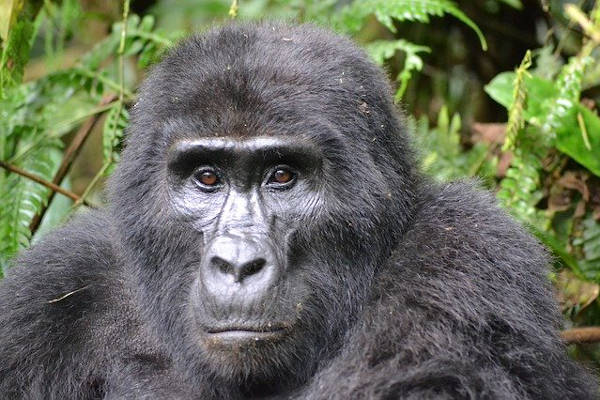
2. How difficult is Gorilla Trekking?
You need a good fitness level to track gorillas. You will be tracking gorillas through a mountainous rainforest. Certain routes are steeper than others. Even the easiest route will need a moderate level of fitness and experience.
You can ask to join a route that will suit your fitness level.
It also depends on the season you trek in. Gorilla tracking is easier in the dry seasons. During the rainy season, the slopes will be slippery and muddy. Vegetation is denser in the wet season, as well. You will exert more energy faster than in dry terrain.
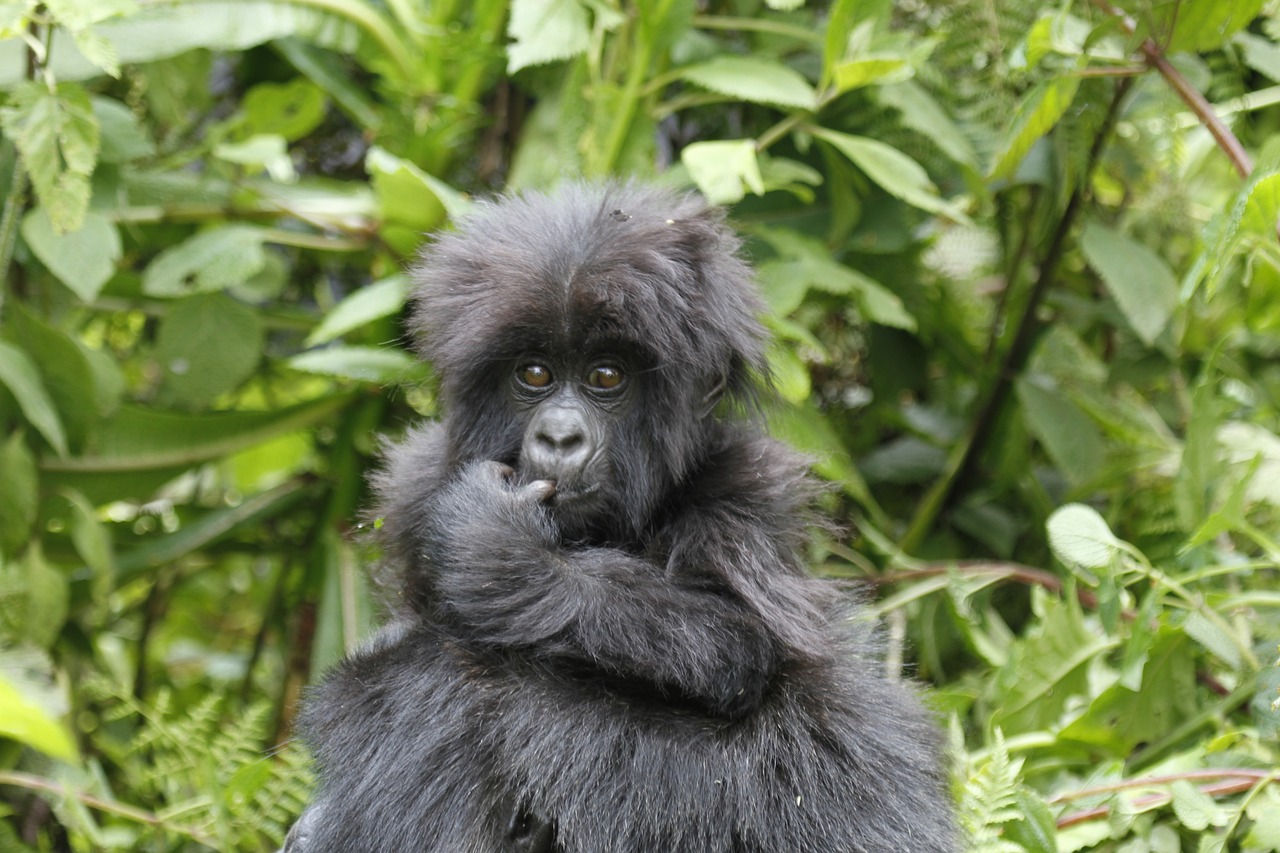
3. What is the minimum age for Gorilla Trekking?
The minimum age requirement for both Bwindi Impenetrable National Park in Uganda and Volcanoes National Park in Rwanda is 15 years old.
4. When is the best time to go Gorilla trekking?
January or February is the best time to see mountain gorillas in Uganda. It is one of the dry seasons which makes tracking and viewing wildlife easier. There are also fewer trekkers so less competition for gorilla permits.
The trekking periods in Uganda are split into high and low seasons.
Due to its location on the equator, Uganda has a tropical climate. The temperatures average around 23⁰C (73⁰F) in the afternoon. There are two rainy seasons in Uganda.
The national parks are open year-round. Gorilla tours are available even during the rainy seasons. Due to its climate, the sun usually peaks through as soon as the rains stop. Lodges and permit rates are usually reduced during the wet season.
The rainy season brings an increase in food along the lower slopes. This makes finding the gorillas easier (usually only about 2-hours of trekking). The forest will also be lush with vegetation; perfect for photography.
While the option is available to trek in the low seasons, you should consider the terrain. The rains will have turned the routes muddy and difficult to trek. This likely won't be a concern for experienced trekkers. But it will still be uncomfortable, especially if it starts raining during your trek.
Below is a brief breakdown of the entire gorilla trekking season according to months in Uganda.
February to March is the best time to track gorillas in Rwanda. It is close enough to the wet season that Volcanoes National Park will not be too busy. It is also still the dry season, and this makes trekking easier.
The trekking periods in Rwanda are split into high and low seasons.
Rwanda has a tropical highland climate and is considered an all-year destination. The temperatures average 30⁰C (86⁰F) in the lowlands and 14⁰C (57.2⁰F) in the highlands.
Viewing wildlife is considered easier in the dry season. Tracks are easier for the guides/ranges to spot and point out to you.
The park is beautiful in the dry season, but the rains bring out a breathtaking lushness. The entire forest comes alive after the rains. The terrain will be slippering though, and trekking while wet will not be pleasant.
On the plus side, the lodges usually reduce their prices during the rainy seasons.
Below is a brief breakdown of the entire gorilla trekking season according to months in Rwanda.
5. How do I acquire a Gorilla Trekking permit?
All permits include a park entrance fee, guide fee, and community contribution.
75% of the fees are for conservation. It provides a means of protection for the national parks and their inhabitants.
Gorilla permits in Uganda are US$700 per person. Permits can be purchased at Uganda Wildlife Authority (UWA) .
If you are visiting as part of a tour group, the agent will likely buy the permit on your behalf. Gorilla tours often include the permit price in the tour fee.
Booking in advance is essential to avoid disappointment. Using an authorized agent will be to your advantage.
Gorilla permits in Rwanda are US$1,500 per person. You can buy the permits from the Rwanda Development Board . Their headquarters is in Kigali. Or, you can get a permit from an authorized agent.
The second option may be a better choice. The travel agency will often include the permit in your travel/tour package.
Booking in advance is essential and an authorized agent can do this for you.
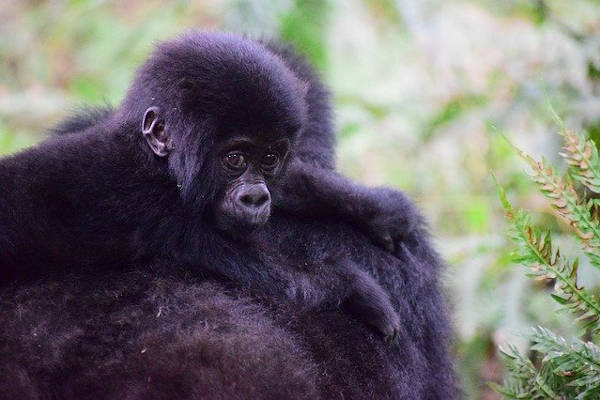
6. What does an average gorilla trekking safari cost?
If you want to trek with gorillas, it is best to do it as part of a tour or safari. Most of these safaris are all-inclusive and the agents see to everything for you. Some tour companies add accommodation in their fees as well.
Keep in mind, that factors such as food, visas, and border crossing, extra gear, etc, all factor into the cost. And that's not mentioning the plane ticket and transportation costs during your stay. If you are working with a strict budget, be sure to consider all factors.
Gorilla safaris fall into 3 categories:
Here are the costs of gorilla trekking in Uganda and Rwanda.
7. What are the best lodges for gorilla trekking?
Below are the 5 best safari accommodation in Uganda and Rwanda, from the lowest price to the highest.
8. What gear do I need for Gorilla Trekking?
You will need to wear the correct clothing to trek through tropical rainforests. It will not be wise to track the gorillas in a shorts and t-shirt. The humidity will make it tempting, but long-sleeves and long pants are safer.
Here's what you should wear when gorilla trekking:
- Waterproof hiking boots
- Long-sleeve shirt
- Long pants (trousers)
- Long socks (consider tucking your pant legs into your socks)
- Rain jacket/poncho
- Consider taking robust gloves (like gardening gloves)
Other gear to bring includes:
- Walking stick (can be acquired at the park headquarters)
- Extra sweater
- Camera or cellphone (don't use the flash for pictures)
- Insect repellent
- Bottled water
- Energy snacks
- Basic first aid kit
- Any chronic medication (allergy medication or EPI Pens, if applicable)
9. What can I expect on a gorilla trek in Volcanoes National Park, Rwanda?
You will begin your gorilla trekking experience with a 30-minute briefing at 7:30 am. Refreshments and entertainment (traditional Kinyarwanda song and dance) are available from 7 am. All free of charge and you can have as much coffee as you want.
Before the briefing, groups of 8 get assigned to a gorilla family to track.
The gorilla trekking kicks off at 8 am. The ranger/guides will lead you through the tropical rainforest. The beauty of the Virunga Mountains is difficult to miss. You could end up climbing steep inclines. It all depends on which gorilla family you are tracking.
It could take between 3-6 hours to track the gorillas.
Some groups prefer the lowlands while others frequent steep slopes. Hiking speed, weather, and terrain also factor into the trekking time. Your guides will also make frequent stops to give you a break.
Under current Covid-19 restrictions, once you find the gorillas, your guides will tell you to sanitize again. You are to maintain at least a 10-meter distance and to keep your voice low. Your guides will answer questions and pictures are welcome (no flash though).
After one hour with these gentle giants, the guides will lead you back out of the forest.
Be sure to keep a watchful eye for wildlife during the trek. Volcanoes National Park is also home to the golden monkey. Seeing them while mountain gorilla trekking is a real treat.
There is a large population of butterfly species and over 50 bird species. The other mammals will be difficult to spot in their natural habitat. The animals are easier to spot in the dry months when the vegetation is less dense.
10. What can I expect on a gorilla trek in Bwindi Impenetrable National Park, Uganda?
Bwindi Impenetrable Forest is home to half of the world's mountain gorilla population. Gorilla trekking in Uganda begins at 7:30 am with a 30-minute briefing. You are placed in groups of 8 and then the staff explains the trekking rules.
After the current COVID-19 safety checks, you will set out at 8 am. Your guides will lead you through the dense forest. Pay close attention as they point out wildlife and unique vegetation. The dry months are the best time to spot animals. You may even encounter the rare forest elephant, buffalo, or giant forest hog.
When encountering wildlife remember to listen to your guides. Their rules are for your safety.
Gorilla trekking could take between 2-6 hours. This depends on which gorilla family you are tracking. The mountain gorillas move around a lot for food. You may end up climbing steep slopes before you encounter them.
Your hiking speed and the weather also factor into gorilla trekking.
When you reach the gorillas, the guides will remind you to keep a 10-meter distance and to keep your voice low. The flash on your camera must be off before you take pictures.
You will spend up to an hour with the great apes, and your guides will answer any questions.
Once back at Bwindi National Park headquarters, you can view one of the many traditional dances (at a fee). It is a great way to end your gorilla trekking experience.
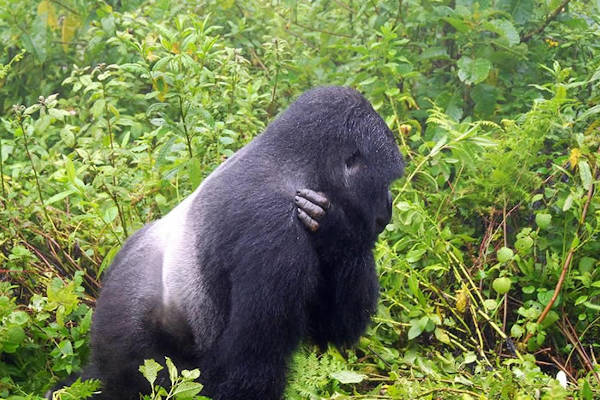
11. What about gorilla treks in Mgahinga Gorilla National Park, Uganda?
Mgahinga Gorilla National Park is not as popular for gorilla trekking in Rwanda and Uganda.
There is only one habituated gorilla family in this park. This means that only one tour group can trek per day. They are usually found in the Nyakagezi area.
As with Bwindi Impenetrable Forest, the briefing is at 7:30 am. The gorilla trekking begins at 8 am with a group of 8.
The area they prefer is very open and the trek is not very difficult. It takes about 2-4 hours to find them. You can visit the gorillas for an hour before returning to headquarters.
12. How many Habituated Gorilla Families are there?
Bwindi Impenetrable Forest has 12 mountain gorilla families available for tracking. There are 7 gorilla family groups in Volcanoes National Park.
Mghinga Gorilla National Park only has one habituated group.
Bwindi Gorilla Families
- Rushegura: 19 members - 1 silverback
- Habinyanja: 17 members - 2 silverbacks
- Mubare: 8 members - 1 silverback
- Bitukura: 14 members - 4 silverbacks
- Oruzongo: 25 members - 2 silverbacks
- Kyuguriro: 15 members - 2 silverbacks
- Nkuringo: 19 members - 2 silverbacks
- Mishaya: 12 members - 2 silverbacks
- Nshongi: 26 members - 1 silverback
- Kahungye: 13 members - 3 silverbacks
- Bweza: 25 members - 1 silverback
- Bsingye: 9 members - 1 silverback
Volcanoes Gorilla Families
- Susa: 39 members - 3 silverbacks
- Sabyinyo: 9 members - 2 silverbacks
- Amahoro: 15 members - 1 silverback
- Group 13: 20 members - 1 silverback
- Umubano: 7 members - 1 silverback
- Kwitonda: 18 members - 2 silverbacks
- Hirwa: 9 members - 1 silverback
Mgahinga Family
- Nyakagezi: 10 members - 5 silverbacks
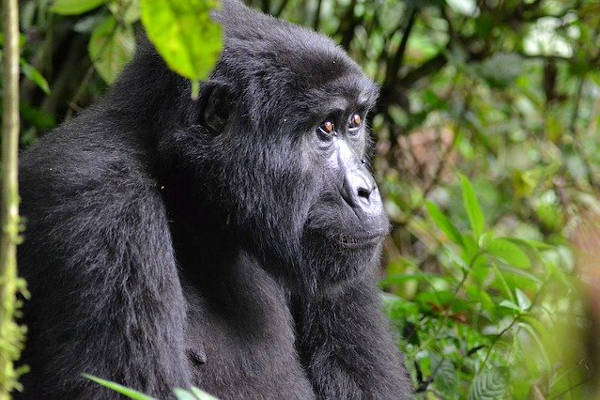
13. What are the safety tips for Gorilla Trekking?
Whether you choose to go gorilla trekking in Uganda or Rwanda, there are regulations you need to follow.
- Pay attention during the debrief; the information is important.
- Follow your guide/ranger's instructions. It is for your safety.
- Do not make direct eye contact. The gorillas will view that as a challenge and charge at you to assert their dominance.
- Maintain a 10-meter distance from the gorillas.
- Do not use a flash when taking pictures. It will startle and scare them, and they may charge at you.
- No loud noises.
- No sudden, aggressive movements.
- No eating, drinking, or smoking when encountering the gorillas.
- Do not cough or sneeze near the gorillas (cover your nose and mouth if you must).
- You cannot go near the gorillas if you are experiencing any symptoms of sickness.
- All human waste must be buried at least 30 cm (2 ft).
14. Is Gorilla Trekking ethical?
Gorilla tracking is ethical as long as it's done right.
The majority of the permit fee is for conservation efforts. It aids in the security of the gorillas in their natural habitat. Protection from poachers is one of many concerns.
All visitors get briefed for 30 minutes before the tracking begins. The staff will explain the regulations and rules. This ensures everyone's safety (yours and the gorillas) during the experience.
The rangers are not only your guides. They will also ensure you follow the rules.
Gorillas, like most wild animals, are territorial and protective. Only gorillas habituated are tracked.
Habituation is the practice of training mountain gorillas to be comfortable around humans. This ensures that they are in no way distressed by the visitors.
15. Uganda or Rwanda: Which is best for Gorilla Trekking?
Deciding which country is the best for gorilla trekking is a personal preference.
Below is a comparison of the highs and lows of visiting each country and their respective national parks.
Pros and Cons of Uganda and Rwanda
The real deciding factor should be the trekking itself. But you won't know your preference unless you trek in both parks.
Tour companies often offer multi-day packages that begin in one park and end in the other. You will cross the Rwanda-Uganda border during this type of tour.
COVID-19 Regulations in Uganda and Rwanda
As we currently live in a post-pandemic world, here is a list of the Standard Operating Procedures (SOP) for tourism for Uganda and Rwanda.
Please note these are subject to change (they are current as of December 2022).
General Covid-19 Regulations in Uganda and Rwanda
- Individuals are required to either possess an up-to-date vaccination certificate or a negative PCR test result not older than 24 hours to attend formal meetings and access public places.
- Vaccination certificates are now mandatory to access government buildings and all public and private offices.
- Wearing facemasks in enclosed spaces are recommended by officials.
- Handshaking and hugging remain prohibited.
- It is advised that all Ugandan citizens get vaccinated at least every six months.
Covid-19 Regulations at Gorilla Trekking Briefing Points
- At the briefing points, all visitors and staff will go through the standard COVID-19 checks. Wash and/or sanitize hands and check body temperature.
- Once the briefing is done, visitors get separated into groups of 8. They are then assigned to gorilla groups. Debriefing is done in those same groups of 8.
- If any of the visitors or staff show symptoms of being sick, they are not allowed to track. These can include flu-like symptoms, reports of diarrhea or upset stomach, malaria, etc.
- All persons must wear masks.
- The visitors will keep a minimum distance of 10-meters from the gorillas.
- A 2-meter distance must be kept among the group while tracking (where able). The guide rangers will ensure this.
- Due to the side-effects of wearing masks for long distances in high altitudes, the group will stop for frequent breaks for fresh air. The guides will monitor proper social distancing during these breaks.
- Everyone will sanitize again once they reach the gorillas.
- Tourists are only allowed to carrying light equipment. Porters should be used as little as possible.
- If someone in the group experiences health problems, the guides will implement established first aid and evacuation guidelines and affected individual(s) will then be moved from the field.
References: Crisis24 , Rwanda Ministry of Health
Continue browsing
See more information on Africa . Or check out these other African Hiking articles:
- Trekking the Rwenzori Glaciers
- Exploring the Simien-Ethiopia Mountain Range
- Complete Guide to Trekking in Morocco
- Uncovering the Atlas Mountains
- Kilimanjaro Climbing Guide
- Complete Guide to Mount Kenya
- Hiking in South Africa
- Major Mountain Ranges in Africa
About the author
Kayla De Jongh
Kayla lives in Cape Town, South Africa - her favorite place in the world! Kayla has traveled extensively in Southern Africa. When she's not writing about adventure travel, she's an epic mum to two gorgeous kids.
Leave a Reply
Your email address will not be published. Required fields are marked
For the minimum age, even those as young as 12 can be allowed to trek mountain gorillas so long as you write a letter to a responsible body. But, thanks for sharing useful information about mountain gorilla trekking.
Thanks Gava!
We work with local guides to offer great value adventures at unbeatable prices.
Gorillaland
Best Time to Visit Gorillas
In the whole world, you can only see the mountain gorillas only in Uganda, Rwanda and Congo. In Rwanda, these primates can be seen in the Volcanoes National Park. There are over 8 habituated gorilla groups in Rwanda thus making it 56 gorilla permits for visitors to Rwanda available every single day since only 8 people are allowed to visit a given group to trek these endangered apes. With a gorilla permit costing US $1500 per person per trek, part of your contribution goes to conserving these mountain gorillas. In Uganda, there are 10 gorilla groups that are habituated where only 9 are trekked every day and the remaining one is gazzetted for research.
Although tracking mountain gorillas can be conducted all year round in these two countries due to the somewhat damp seasons experienced by the national parks in which these gorillas stay, the majority of tourists prefer visiting from June to September as well as from December up to February. This similarly applies in Uganda although there the rains begin in March up to May. Certainly the rains although not very heavy make it challenging to trek the sheer landscape. During that time the rain falls for just one to two hours in about 3 days of the week and for the rest of the days the sun is out. However even in the dry months of Uganda, there are some little showers experienced in Bwindi.
The seasonality of the trackers can as well be accredited to the overall weather back in the home countries. During summers for instance in Europe, the number of gorilla trekkers is high and then in winter it greatly lowers. Also there are some trekkers who take advantage of the seasonal discounts offered on the gorilla tracking permits. For example not long ago the Uganda wildlife Authority lowered the cost of permits by thirty percent for all non-Ugandans for the months of April and May whereby they will go for $350. The other months the gorilla tour permit will go for $600. A number of accommodation facilities in the areas where the gorillas are found as well will offer discounts in these months.
Within Rwanda, the initial rains are experienced at the end of February, March, April as well as May, and for that reason most of the tourists don’t visit during that time since it is muddy and pretty wet while tracking the mountain gorillas. However, during these very months, since it is raining, there is a lot of food for the gorillas on the lower slopes and also the temperatures are lower on the lower slopes. Because of that, the gorillas stay on the lower slopes since food is easily accessible and it is warmer. Therefore if you choose to track in these months, you won’t have a very long trek and actually most trackers find the gorillas just after two hours of trekking meaning by 2:00pm they are back at their lodge.
No matter what your explanation is, experience reveals that gorilla trekking can be enjoyed all year round and you will surely enjoy a great experience.
All said and done, Gorillas are 98% human s so they are affected by very many things that affect human beings too. So when in the midst of these primates, there are certain guidelines that one ought to put into consideration and adhere to and they include;
- While with gorillas, a visitor is not allowed to eat or drink.
- In case you feel like sneezing, you hold your nose and turn to face the other side not direct with the gorillas.
- You are not allowed to litter while in forest
- Flash photography is not allowed since it can upset the gorillas.
- You are supposed not to come so nearer the gorillas, keep some distance.
- Keep close as a group; do not scatter your selves.
- You are supposed to keep silent do not shout or make noise near the gorillas.
- You are supposed to spend 1 hour with gorillas
- Spitting in the park is strongly prohibited.
If a gorilla should charge or vocalize at you, do not be alarmed, stand still, look away from the gorilla and follow your guide’s directions. What Is The Best Time To Trek Gorillas In Uganda Or Rwanda?
- Travel Guides Plan your adventure
- Destinations Our favourite places
- Tours Book a trip
- Travel Companies Independent specialists
- Travel Guides
- Destinations
- Travel Companies
The best time to see gorillas
When to go gorilla trekking in rwanda & uganda.
Charlotte Beauvoisin
- In this guide
- Uganda or Rwanda?
- Gorilla trekking costs
- Before & after
- Photography tips
- Conservation
When to go gorilla trekking: quick reference
In my opinion, the best times to see gorillas in Rwanda & Uganda are during the dry (but hot) seasons between June-September, and December-February.
High / peak season: June-August.
Low season: April-May and September to November.
Best weather: Between June-September, and between December-February.
Worst weather: Between March-May and September-November.
featured trips
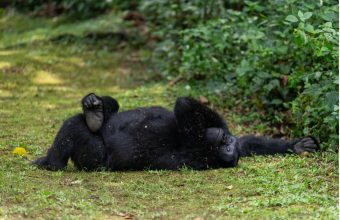
Wildlife of Western Uganda Safari
Discover the wonderful wildlife of western uganda.
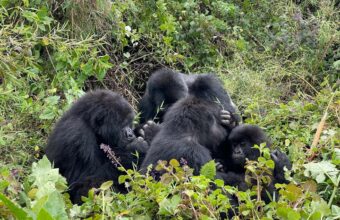
Rwanda Chimpanzee, Gorillas and Golden Monkey Trekking
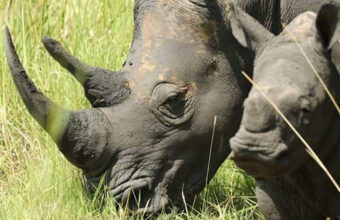
10 Day Uganda Wildlife Highlights
Gorilla tracking, chimpanzees and more.
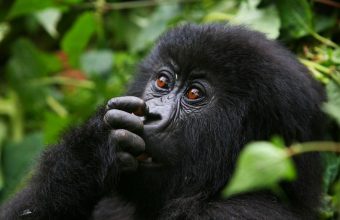
Best of Rwanda
Wildlife and culture rwanda safari.
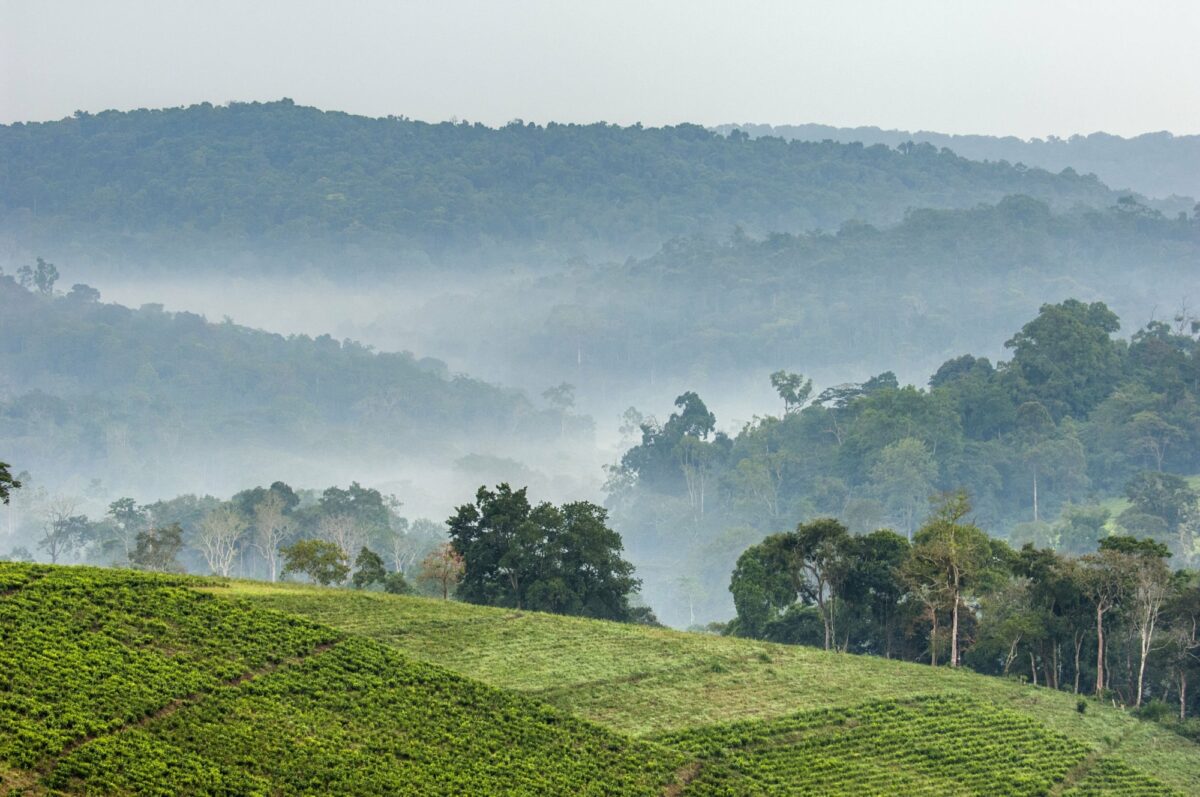
The cloud cover moves in over Bwindi Impenetrable Forest, Uganda
When to see gorillas in Uganda & Rwanda?
Climate, seasons and best months to visit.
The climate, gorilla trekking conditions, and tourism seasons are more or less the same in both Rwanda and Uganda. Gorilla-trekking is a year-round activity, but I find there are some important considerations when timing your trip.
In my experience, the overall best weather is during the two dry seasons, which run from June-September, and December-February. You can still expect some rain during these periods, but conditions are generally more comfortable and the trails less muddy.
Of the two, I find June-September are the driest; with light showers during December-February.
The rainy seasons, from March-May and September-November, can be very soggy. March-May brings the heaviest rains, and the going can be tough – especially in Uganda’s Bwindi Impenetrable Forest, which is generally steeper, muddier and more dense than in Rwanda.
That said, gorilla tourism remains open year-round. It will be much quieter during the rainy/off season and you might find some good deals.
My biggest tip is to time your visit for the “shoulder” period either side of the rainy season, when prices are lower, crowds are lighter and the rains might be easing off.
When to go gorilla trekking in Rwanda
Gorilla trekking in Rwanda can be done year-round, however, rainfall is heavier in September-November and March-May, when paths can become muddy and difficult to hike.
I always remind people that they're visiting a rainforest. It will, by definition, be wet all year round!
That said, there is still a marked difference between the dry and rainy seasons. The weather is generally drier and hotter between June and September, and again from December to February. These are my preferred months to go gorilla trekking in Rwanda.
During March and May, and again from September to November you can expect more frequent and heavier rain showers. Muddy roads and paths can become tricky to handle.
Temperatures are fixed year round between 21°C (70 F) and 30°C (86 F), dropping to 10°C (50 F) at higher altitudes. Although chilly at night, the exertion of hiking and climbing will keep you warm during the day.
The advantages to visiting in dry season are less muddy paths, easier hiking and clearer views of the wildlife. The disadvantage is that this is peak tracking season and therefore permit availability is lower. You’ll need to book well in advance.
Peak season & when to book
Peak tourism seasons are June to August and around Christmas and New Year. If you plan to go gorilla trekking in Rwanda during peak season or if you are in a large group, you should book six months or more in advance. The earlier you book the more choice you have on where you trek gorillas and where you stay. Last-minute bookings may be possible during low season or with smaller groups.
Aside from more choice in permit and accommodation availability, there are some other pros to visiting during rainy season—not least that smaller group sizes allow a more intimate tracking experience.
If you have little time it is, in theory, possible to see mountain gorillas in Rwanda in just one day—if you fly in very early in the morning. However, it is strongly recommended to spend at least two or three days in the region. The altitude and exertion of the climb can be unpleasant when rushed, and it is worth spending some time acclimatising. And besides, there's so much more to Rwanda than 'just' one hour with the gorillas.
When to go gorilla trekking in Uganda
Since Rwanda almost doubled the price of gorilla tracking permits, it has become more difficult to secure gorilla permits in next door Uganda.
If you plan to travel during peak season or if you are in a large group, I strongly recommend you book six months or even a year in advance. Peak seasons are June to October and Christmas and the New Year. The earlier you book the more choice you have on where you stay and where you track. Last-minute bookings may be possible during low season or with smaller groups, but cannot be guaranteed.
Gorillas can be tracked throughout the year, however, rainfall is heavier in November and April/May. During those times, it can be very muddy underfoot. The upside is that permits are a little easier to obtain plus you may find fewer tourists on your trail, which I prefer.
Permit availability
Permits and accommodation during the peak summer months of June-August sell out a long way in advance. If you’re set on visiting during the peak months you may need to book at least a year in advance.
Other things to do
Since you’re going all the way to East Africa, you’re hopefully also making time for the rest of the region:
July-August is normally peak wildebeest river crossing season in neighbouring Kenya and Tanzania, when the herd makes its epic (and dangerous) crossings of the Mara River.
December is the main Mt Kilimanjaro climbing season in neighbouring Tanzania.
In Rwanda, the annual Kwita Izina gorilla-naming ceremony takes place every September. A more solemn occasion is Kwibuka, a series of events held in April in commemoration of the 1994 genocide. Visitors are welcome at both events.
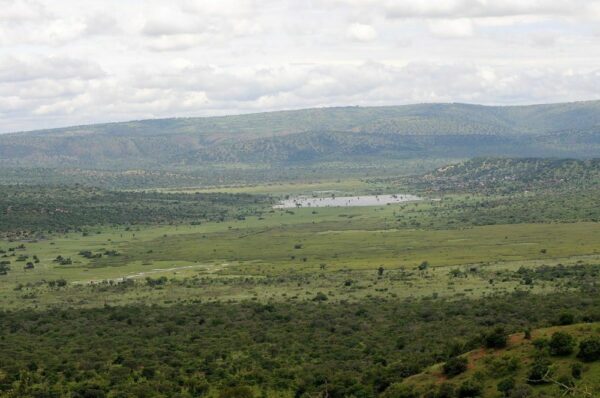
What To Do After A Gorilla Trek
UgandaUganda is a haven for primate lovers…
About the author
Charlotte is a travel journalist and guidebook author based on the edge of Kibale Forest, Uganda. She is an expert contributor on East Africa for the Bradt Uganda Guidebook and has written for Lonely Planet, The Daily Telegraph and Fodor's. She also volunteers with Conservation Through Public Health where she works with Dr Gladys Kalema-Zikusoka, Uganda's most prominent gorilla vet.
Featured tours
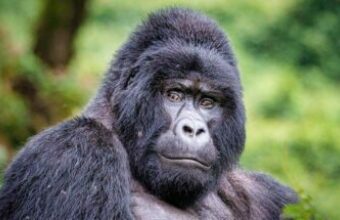
12 Day Uganda Wildlife Highlights
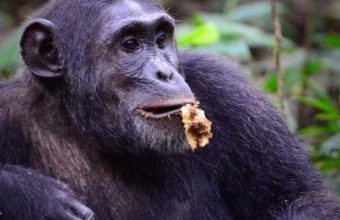
Ultimate Primate Experience
Visit uganda's gorillas & chimps.

12 Day Luxury Gorilla Trekking
Flying safaris and exclusive accommodations.
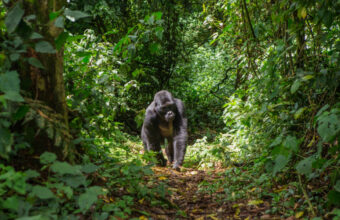
Ugandan Primate Habitat Safari
Witness the great apes, chimpanzees and golden monkeys of uganda.
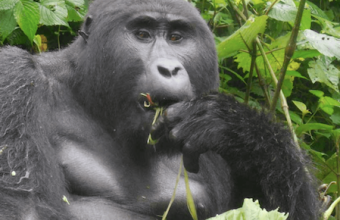
Gorillas & Hiking Uganda's Rwenzori Mountains
Explore the flourishing wildlife of uganda.

10 Day Chimps & Wildlife Safari- Uganda
Featured tours view all.
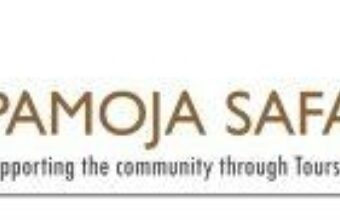
Why Horizon Guides?


Impartial travel guides
Our guides are written by the leading experts in their destinations. We never take payment for positive coverage so you can count on us for impartial travel advice.

Expert itineraries
Suggested itineraries and routes to help you scratch beneath the surface, avoid the tourist traps, and plan an authentic, responsible and enjoyable journey.

Specialist advice
Get friendly, expert travel advice and custom itineraries from some of the world's best tour operators, with no spam, pressure or commitment to book.
Our guides are 100% impartial and are written by independent, professional travel journalists. We make money by charging carefully-screened travel companies to list their business on our website. Our advertisers have no influence on our editorial content and we never accept payment for positive coverage.
Read more about how we work and what we believe in here .
- Travel guides
- Work with us
Sitemap , Privacy Copyright © 2024 Horizon Guides
- Mount Bisoke
- Mount Gahinga
- Mount Karisimbi
- Mount Muhabura
- Mount Sabinyo
- Buhanga Sacred Forest
- Musanze Caves
- Karisoke Exhibit
- Dian Fossey
- Gorilla Tourism
- Community Tourism
- Conservation
- Research Gorilla Groups
- Agashya Gorilla Family (Group 13)
- Amahoro Gorilla Family
- Bwenge Gorilla Group
- Hirwa Gorilla Family
- Karisimbi (Susa B)
- Kwitonda Gorilla Family
- Sabinyo Gorilla Family
- Susa A Gorilla Family
- Ugenda Gorilla Family
- Umubano Gorilla Family
- 1 Day Rwanda Gorilla Trek
- 2 Days Rwanda Gorilla Trek
- 3 Days Golden Monkey Trek
- 3 Days Karisimbi Hike
- 3 Days Rwanda Gorilla Tour
- 4 Days Rwanda Gorillas & Golden Monkeys
- 4 Days Rwanda Gorillas & Lake Kivu
- 5 Days Rwanda Gorillas & Chimpanzees
- 6 Days Rwanda Gorillas & Dian Fossey
- 7 Days Rwanda Safari Adventure
- Gorilla Families
- Virunga Gorillas
- Golden Monkeys
- Twin Lakes of Bulera & Ruhondo
- Virunga Birdlife
- Visoke Crater Lake
- Bird Watching
- Gorilla Trekking
- Dian Fossey Hike
- Boating on Twin Lakes
- Golden Monkey Tracking
- Caving Tourism
- Kwita Izina
- Volcano Hiking
- Getting Around
- Getting There
- About Rwanda
- Gorilla Permits
- Gorilla Watching Guidelines
- How to Get Rwanda Visa
- Packing List
- Tour Operators
Guide to Best Time to Visit Rwanda Gorillas
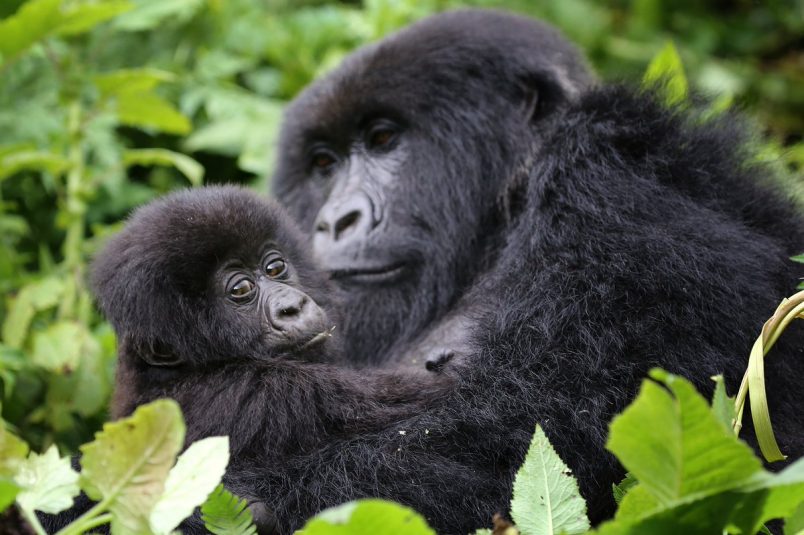
- May 20, 2019

What is the Best Time to Visit Rwanda Gorillas?
Rwanda is one of the three countries in Africa known to be a natural habitat to the world’s endangered mountain gorillas. These live in the Volcanoes national park lying in the Virunga Conservation area.
In Rwanda, the first rains start coming in late February through March, April and May and many Gorilla trekkers do not want to do trekking in this period avoiding the terrain in the forest and probably getting wet while tracking the gorillas. The fact that the rains at this time are plenty, there is plenty of food as well for the gorillas on the downer slope and it’s much colder on the upper slopes. So the mountain gorillas keep on the lower slopes where they find it warmer and get food easily. So if you track the gorillas during these months, most likely your trek won’t be a long one – many trackers find the gorillas after a 2 hours hike.Those who are not so fit to move in the forest for longer distances can use these months. Do not be discouraged by the rainy months.
In Rwanda Gorillas can be tracked during the high season in the months of June to September and then December, January and February. However during this time the accommodation rates are abit high because of the many trekkers and you are most likely to spend more hours in the forest searching for the hiding gorillas.
For trekkers who prefer easiest gorilla trekking conditions in Rwanda, The best time to visit Rwanda for a gorilla trek is during the short dry season from mid-December to early February or over the long dry season months of June to September. During the dry season, Gorillas move actively in their natural habitat .Trekkers get chances of viewing them feed their young ones, swinging from one branch to another etc. Please note that Rwanda Gorilla permits are available all year round.

A mountain gorilla snacks on leaves while perched high in a tree.
5 Reasons You Need to See Gorillas in Uganda
Mountain gorillas can only survive in the wild, so trekking into their native forests is your only chance to catch a peek.
Sitting in silence on the cold ground of a Ugandan forest for 60 minutes might be one of life’s greatest privileges. There are fewer than 900 mountain gorillas in existence, and gorilla trekking provides a rare opportunity to observe the everyday interactions of these gentle, mysterious primates.
Mountain gorillas only live in the dense vegetation of Uganda’s Bwindi Impenetrable Forest National Park and along the dormant volcanic Virunga mountain range that stretches across Rwanda ’s Volcanoes National Park , Uganda’s Mgahinga Gorilla National Park , and Virunga National Park in the Democratic Republic of the Congo .

An infant mountain gorilla brushes its face against an adult male in the grass of Uganda's Bwindi Impenetrable Forest National Park.
In 1981, environmentalists estimated there were only 254 mountain gorillas left in the world, but the small population is rising slowly thanks to intense international conservation efforts. Since these critically endangered creatures can’t survive in captivity, the only way to see them is by trekking up to their natural habitat: misty cloud forests that can reach altitudes of 14,763 feet.
Here are 5 reasons to make Uganda your base for this incredible journey.
You’ll Be Where Half the World’s Mountain Gorillas Live.
There are two gorilla trekking spots in Uganda: Bwindi Impenetrable Forest National Park and Mgahinga Gorilla National Park. Gorillas don’t pay mind to political borders, so populations across the Virungas are relatively fluid. Uganda has an edge, however, since Bwindi alone is home to half of the world’s mountain gorillas.

Mountain gorillas live only in the dense forests on and around the Virunga mountains in Rwanda, Uganda, and the Democratic Republic of the Congo.
Bwindi Impenetrable Forest National Park (also called “The Place of Darkness” due to its dense treetops) is an ancient, montane and lowland forest spanning 128 square miles. The region was named a UNESCO World Heritage site thanks to its incredible biodiversity and the large number of endangered species that call it home.
Mgahinga Gorilla National Park accounts for 13 square miles of the larger Virunga habitat, which stretches across 168 square miles into Rwanda and the Democratic Republic of the Congo. The national park includes three of the eight major Virunga peaks: Mount Gahinga, Mount Muhabura and Mount Sabyinyo.

A male gorilla shows its teeth as its family lounges in Uganda's Mgahinga Gorilla National Park.
You Can Fight Habitat Destruction by Supporting Community Enrichment.
Habitat destruction is the main threat to mountain gorillas. Communities around the parks are heavily populated, and residents have traditionally used land around national park boundaries for farming or logging.
Since tourism is now Uganda’s most lucrative industry, and the majority of tourists come to see the mountain gorillas, trekkers are encouraged to seek out ways to give back to the communities they visit. One popular option is to hire a porter, who is always a local resident and occasionally a reformed poacher. The landscape within the parks is unpredictable and difficult; porters help guide trekkers through river crossings and up steep, muddy inclines.
Other options is to participate in community-led cultural initiatives. In Bwindi village, the Bwindi Bar trains disenfranchised young adults in hospitality through rigorous classes and work experience. Around Mgahinga, elders of the Batwa tribe lead visitors on a forest tour along the Batwa Trail , explaining how their self-sufficient, forest-dwelling tribe traditionally used medicinal plants.
You’ll Find More Affordable Trekking Permits.
There are strict regulations in place to make sure the gorillas stay healthy and wild—starting with the gorilla trekking permit process. Daily viewings of each gorilla group are extremely limited, so visitors should apply well before their desired dates.

A visitor photographs a mountain gorilla inside Bwindi Impenetrable Forest National Park.
In Uganda, permit costs vary depending on the season. In April, May and November, permits are $450. The rest of the year, they cost $600. In contrast, permits in Rwanda now cost $1,500 year-round.
Most trekking in Uganda takes place in Bwindi, where there are multiple starting points and several gorilla families to track. Visits are led by park rangers and groups of eight are allowed to observe the gorillas for one hour, in silence and at a safe distance.
You Can Take on Challenging Terrain.
One look at southwestern Uganda’s green terraced hills and rolling volcanic slopes and it’s clear this area of the country is not for the faint of heart. Add in the high altitude and the challenging terrain, and gorilla trekking in Uganda promises to be the adventure of a lifetime.
- Nat Geo Expeditions
It’s hard work to reach the gorillas. It requires navigating uphill and downhill through thick tangles of vines, thorns, and roots. The appropriately named Bwindi Impenetrable Forest National Park is only accessible by foot. There are no paths, no signs, no directions—and more often than not, no clearings (which is why the park rangers carry machetes). The good news? The reward seems that much better after all of the hard work.

A young mountain gorilla looks at a photographer in Bwindi Impenetrable Forest National Park.
Other Primates Will Inevitably Cross Your Path.
Uganda is a primate-lover’s dream. In addition to mountain gorillas, Mgahinga is home to another endangered species: the golden monkey. These furry, comical monkeys live high up in bamboo forests. Tracking golden monkeys is very similar to tracking gorillas, but the trek itself is not quite as challenging.
Further afield, Bwindi has L’hoest monkeys, gray-cheeked mangabeys, and blue monkeys. In Kibale Forest National Park , chimpanzees steal the show. Patas monkeys roam around Murchison Falls National Park . Queen Elizabeth National Park has blue monkeys and red-tailed monkeys (not to mention non-primates, like lions and elephants).
Visit mountain gorillas in Uganda's Bwindi Impenetrable Forest National Park with National Geographic.
Our Favorite Photos of Primates

FREE BONUS ISSUE
Related topics.
- MOUNTAIN GORILLA
You May Also Like

Affordable gorilla encounters in Uganda's Bwindi Impenetrable Forest

How locals are protecting the wildlife of the Queen Elizabeth Conservation Area

10 whimsical ways to experience Scotland

10 best things to do in Texas

Looking for a truly remote, off-the-grid adventure? Try Panama.
- Environment
- Perpetual Planet
History & Culture
- History & Culture
- Mind, Body, Wonder
- Paid Content
- Terms of Use
- Privacy Policy
- Your US State Privacy Rights
- Children's Online Privacy Policy
- Interest-Based Ads
- About Nielsen Measurement
- Do Not Sell or Share My Personal Information
- Nat Geo Home
- Attend a Live Event
- Book a Trip
- Inspire Your Kids
- Shop Nat Geo
- Visit the D.C. Museum
- Learn About Our Impact
- Support Our Mission
- Advertise With Us
- Customer Service
- Renew Subscription
- Manage Your Subscription
- Work at Nat Geo
- Sign Up for Our Newsletters
- Contribute to Protect the Planet
Copyright © 1996-2015 National Geographic Society Copyright © 2015-2024 National Geographic Partners, LLC. All rights reserved
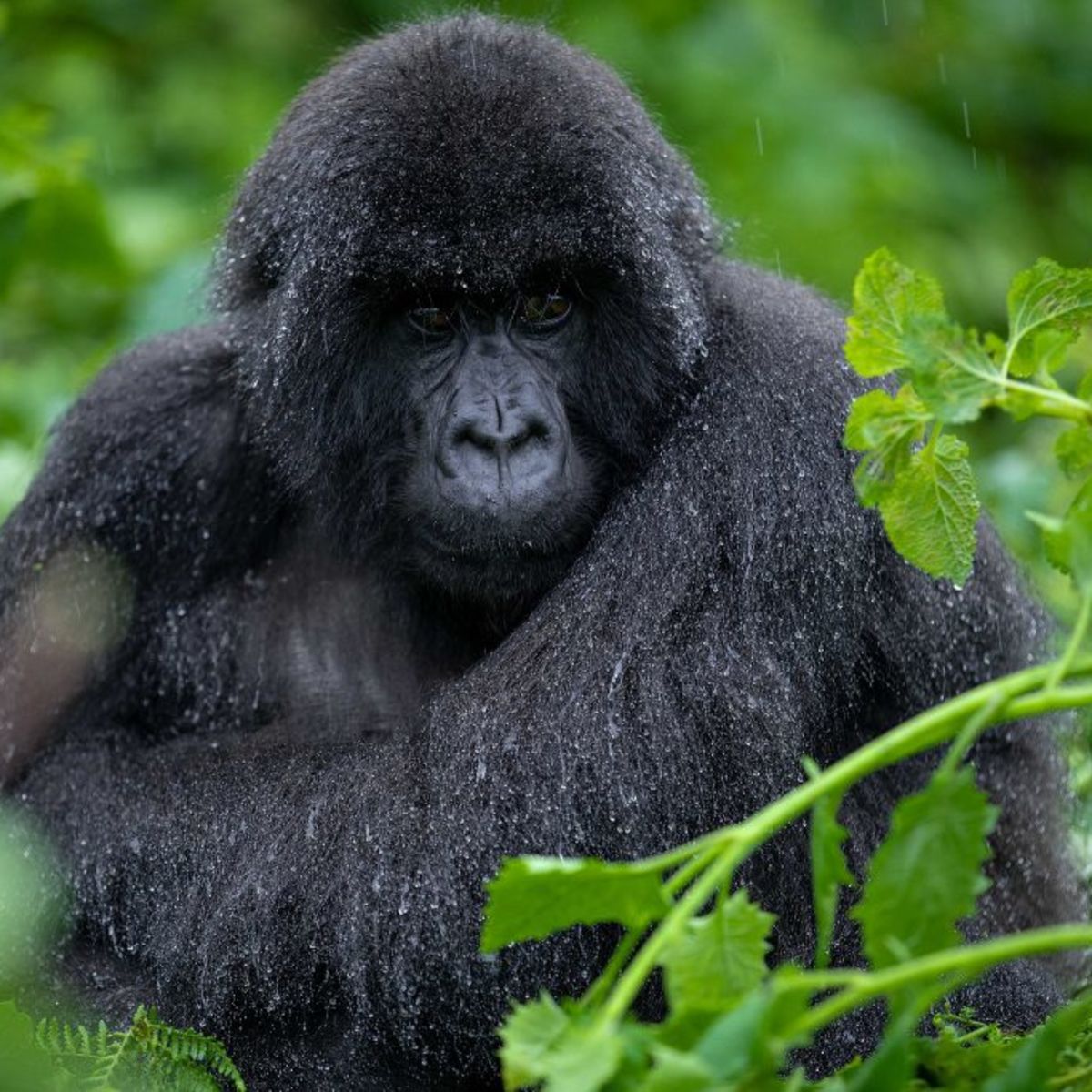
1. Where is the best place for gorilla trekking?
Mountain gorillas can only be found in the Virunga Massif, a volcanic mountain range covering the border region between Rwanda, the DRC and Uganda meet.
At Follow Alice we take groups on gorilla treks in Uganda and Rwanda. Very few people head to the DRC for gorilla trekking as the political situation there isn't very stable.
The two parks with mountain gorillas in Uganda are Bwindi Impenetrable National Park and Mgahinga National Park.
It's generally accepted that Bwindi offers better gorilla trekking. For starters, it's a beautiful place that's been recognised as one of the most biologically diverse forests in Africa. Secondly, Bwindi has more far more gorillas than Mgahinga. As of 2018, its mountain gorilla population was 459, while Mgahinga has only around 80.
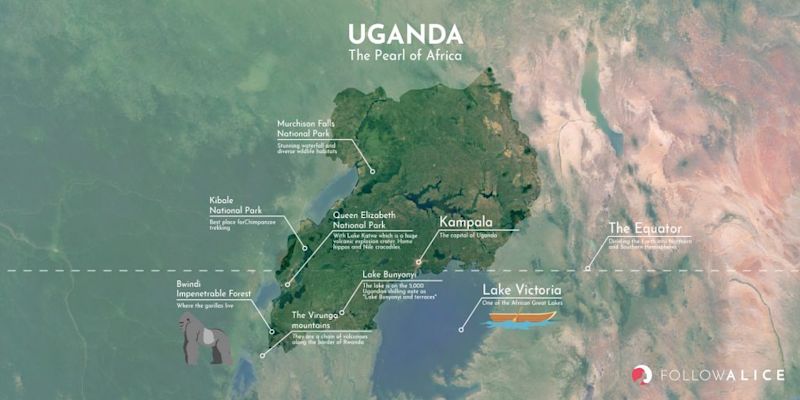
Map of Uganda, a small and landlocked country in East Africa
– Beni Loertscher
In Rwanda, there's one place for visiting mountain gorillas: Volcanoes National Park. This beautiful park shares the same gorilla population as Mgahinga National Park over the border. This is because the animals are allowed to roam freely between the parks, as they form one habitat.
2. What is the habitat of the gorillas?
Spoiler alert: a clue is in the name!
Mountain gorillas, a subspecies of the eastern gorilla, live in forests high in the mountains. These forests sit at elevations of 2,500 to 4,000 m (8,000 to 13,000 ft).
Mountain gorillas are herbivores. Their diet consists of plants such as roots, shoots, wild celery and fruits, all of which flourish in the cool and moist mountain climate.
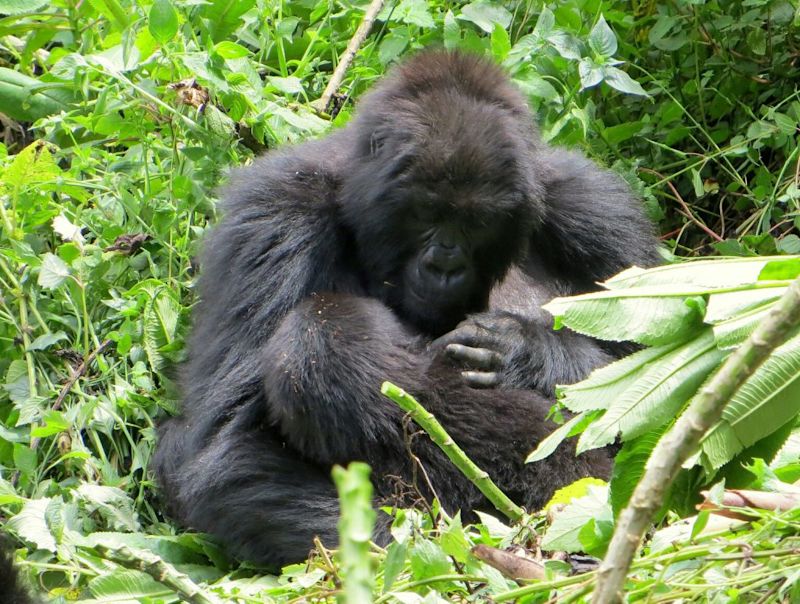
A mother and her infant | Image by Carine06
6. Am I guaranteed to see mountain gorillas?
As with the nature of any trek or safari, there comes with it an acceptance that nothing can be 100% guaranteed.
That said, we've never heard of a group being so unlucky as to not see some. The parks actually send out trackers before anyone embarks on their trek. These trackers are in contact with your guide via radio and GPS, which means you'll know you're heading in the right direction to locate gorillas!
As mentioned, a gorilla trek takes you to see a gorilla troop , which is their family unit. This means you're likely to see a variety of mountain gorillas, including some adorable infants!
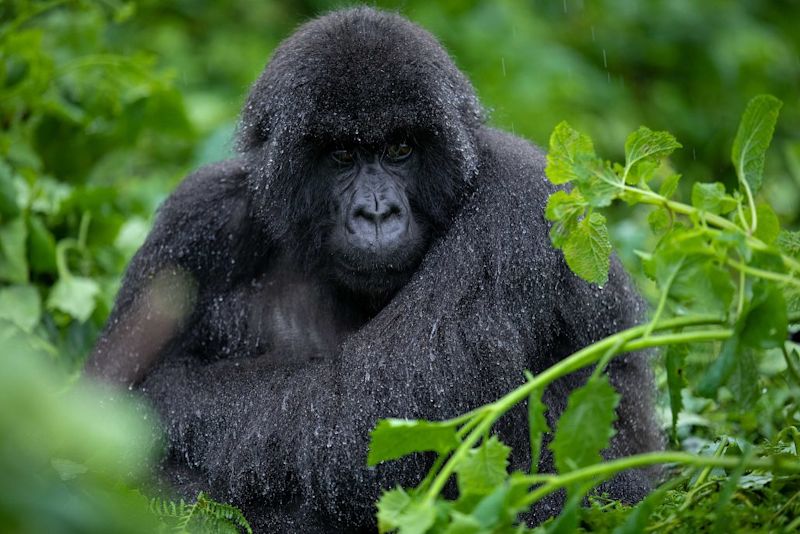
A mountain gorilla sitting in the rain | Image by Emmanuelkwizera
8. How long does it take to find the gorillas?
When you meet the national park rangers in the morning for your briefing, they already have a rough idea where the various gorilla troops are.
Visitors have a choice of a short, medium or long trek. If you opt for a short trek, you can expect to find your troop in around half an hour, while if you opt for the long trek, it can take two to three hours, or more.
We recommend choosing the long trek if you're in decent physical shape; hiking through the dense rainforest is a truly memorable experience in and of itself! The longer treks also build your anticipation for when you finally meet the gorillas!
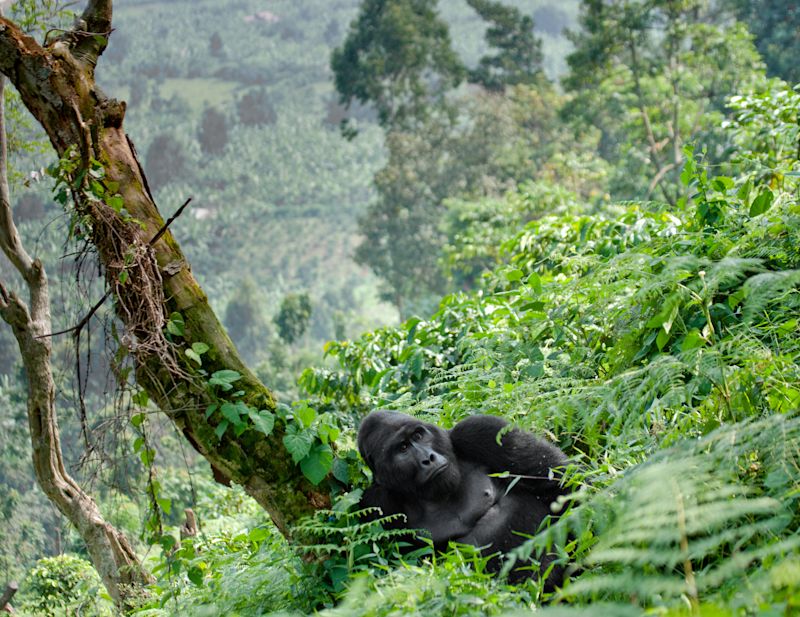
Different variables determine how long it will take to find your gorilla troop
11. Is it safe to visit Uganda or Rwanda?
Uganda and Rwanda are both stable countries that are welcoming towards tourists. That said, travelling with a tour operator like Follow Alice who employs local tour guides is a sensible option. Locals know the in's and out's of any country and so travelling with a local guides helps to ensure your safety.
In all three gorilla parks there are no guerrillas – just gorillas. The parks have all made security and safety a priority, and as such there have been no negative incidents reported.
13. What is the weather like on a gorilla trek?
Mountain gorillas live in montane rainforest. These forests have a mild, wet climate. Temperatures are pretty consistent year-round. This is because of the parks' proximity to the Equator.
Daytime temperatures are usually around 23° C (73° F), and 11° C (52° F) at night. There's no real dry season, as rain can happen anytime here! So be sure to come prepared with waterproof clothing.
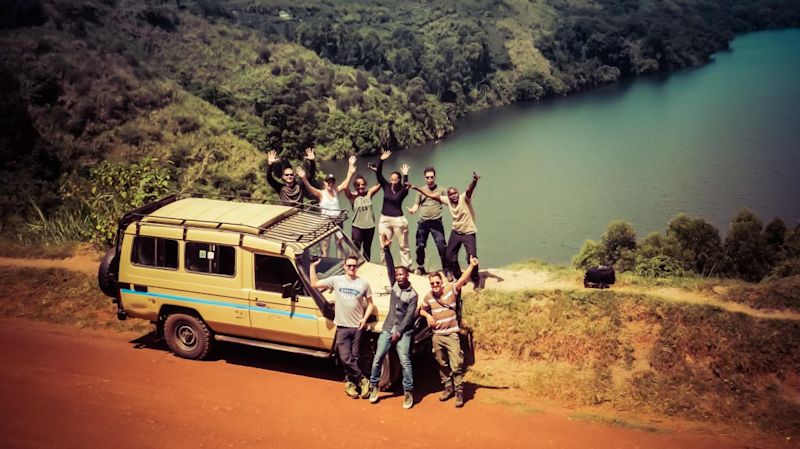
One of our trip groups posing for a photo on the road in Uganda
18. Can I hire a porter on a gorilla trek?
You can certainly hire a local porter from one of the surrounding villages if you'd like, though most people tend to just carry their own things in a daypack.
The local porters usually ask for a fee of US$10 to $15, excluding a tip (which is expected). Using a porter is a nice way to support the local people and economy.
If you do hire a porter, we recommend a tip of $5 to $10 on top of the fee if you were happy with the service rendered.
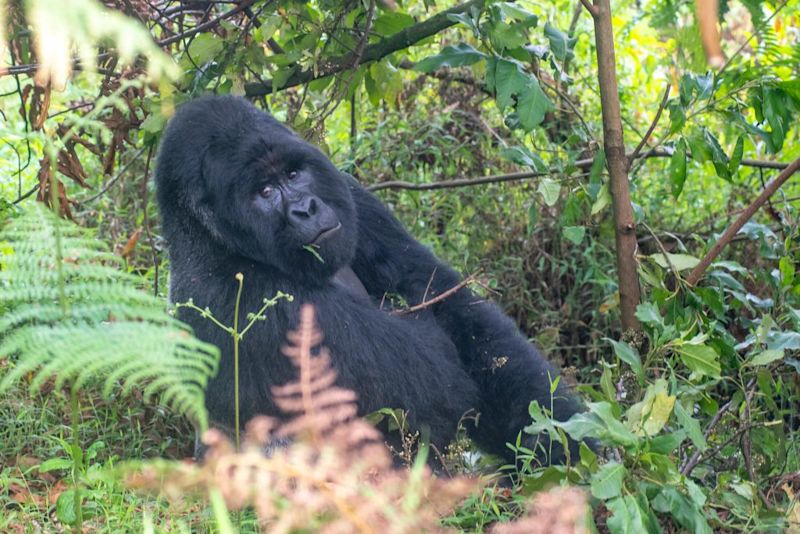
Habituated mountain gorillas aren't fazed by the presence of humans
20. How do I choose a trekking tour operator?
There are lots of tour operators offering gorilla trekking trips to Uganda or Rwanda. Choosing a company and group to go with can be quite overwhelming!
We recommend opting for a fun, responsible and personable operator like ourselves who just want you to have the best time possible.
We also encourage you to go with a tour operator that employs local people, so that your visit benefits the local economy. Again, that would be us. 😉
At Follow Alice we organise pre-travel WhatsApp group chats so you can get to know your group (and us). We're also in constant contact with our awesome local guides, whom we know well and trust to take excellent care of our guests.
To see our gorilla trekking tours in Uganda, take a look here . Or for our gorilla trekking tours in Rwanda, take a look here . We hope to have you join us soon!
Got any questions? Want to have a chat about this trip? Get in touch! We'd love to hear from you. 🌎
Winter is here! Check out the winter wonderlands at these 5 amazing winter destinations in Montana
- Travel Destinations
- Africa & Middle East
The Ultimate Guide To Gorilla Trekking In Uganda
Published: November 17, 2023
Modified: December 28, 2023
by Raven Johnston
- Plan Your Trip
- Travel Tips
Introduction
Welcome to the ultimate guide to gorilla trekking in Uganda! Nestled in the heart of East Africa, Uganda is a hidden gem for nature enthusiasts and adventure seekers. Home to over half of the world’s population of endangered mountain gorillas, this incredible destination offers a once-in-a-lifetime opportunity to witness these majestic creatures up close in their natural habitat.
Gorilla trekking has gained international recognition as one of the most thrilling wildlife experiences on the planet. Uganda’s dense jungles and mist-covered mountains provide the perfect backdrop for this unforgettable adventure.
Not only does gorilla trekking offer the chance to observe these magnificent creatures in their natural surroundings, it also contributes to the conservation efforts aimed at protecting them. By partaking in this extraordinary activity, you are directly supporting the conservation of these endangered species and the preservation of their fragile ecosystems.
Uganda’s commitment to conservation has made it a premier destination for gorilla trekking, with several national parks offering treks to encounter these gentle giants. Bwindi Impenetrable National Park and Mgahinga Gorilla National Park are the main gorilla trekking locations, each providing a unique experience to visitors.
In this comprehensive guide, we will walk you through everything you need to know about gorilla trekking in Uganda. From permit requirements and booking procedures, to the best time to go and what to pack, we’ve got you covered. We’ll also provide insights into the gorilla trekking rules and regulations, as well as safety tips to ensure a seamless and enjoyable experience.
But gorilla trekking is not the only highlight of Uganda. The country is also a haven for other wildlife species such as chimpanzees, elephants, and lions. With its diverse landscapes, including the iconic Rwenzori Mountains and the stunning Lake Victoria, Uganda offers a myriad of activities for outdoor enthusiasts, including birdwatching, hiking, and cultural experiences with local communities.
So, get ready for an adventure of a lifetime as we delve into the world of gorilla trekking in Uganda. Whether you’re an avid wildlife enthusiast or simply seeking a unique travel experience, Uganda promises to leave you awe-inspired and forever changed.
Why Choose Uganda for Gorilla Trekking?
When it comes to gorilla trekking, Uganda stands out as an exceptional destination. Here are some compelling reasons why you should choose Uganda for your gorilla trekking adventure:
- Largest Population of Mountain Gorillas: Uganda is home to over half of the world’s population of endangered mountain gorillas. With approximately 480 individuals spread across two national parks, Bwindi Impenetrable National Park and Mgahinga Gorilla National Park, Uganda offers a high chance of encountering these incredible creatures.
- Diverse and Pristine Habitat: Uganda’s national parks provide a unique and diverse habitat for the mountain gorillas. Bwindi Impenetrable National Park, a UNESCO World Heritage Site, boasts dense rainforests, steep valleys, and rugged terrain. Mgahinga Gorilla National Park, situated in the virunga volcanic range, offers a mix of bamboo forests and open meadows.
- Authentic and Unspoiled Experience: Unlike some other gorilla trekking destinations, Uganda offers a more intimate and authentic experience. The limited number of permits available each day ensures that only a small number of visitors can explore the gorilla habitats, minimizing the impact on the environment and providing a more exclusive encounter.
- Varied Trekking Routes: Uganda’s national parks offer a variety of trekking routes, allowing visitors to choose the one that suits their preferences and fitness levels. Whether you opt for a shorter and less strenuous trek or a more adventurous and challenging hike, Uganda caters to all types of trekking enthusiasts.
- Opportunity for Cultural Immersion: Gorilla trekking in Uganda provides an opportunity for cultural immersion. Interact with local communities and gain insight into their traditional way of life. You can visit local villages, learn about their customs and traditions, and even participate in community-led activities.
- Exceptional Wildlife Viewing: While gorilla trekking is the main highlight, Uganda offers an abundance of other wildlife species. Enjoy sightings of chimpanzees, golden monkeys, elephants, and a rich variety of bird species. The country’s extensive network of national parks and reserves ensures incredible wildlife viewing opportunities.
Choosing Uganda for your gorilla trekking experience means not only witnessing the awe-inspiring mountain gorillas but also immersing yourself in an unforgettable adventure in a country renowned for its warm and welcoming hospitality. Uganda’s commitment to conservation, diverse landscapes, and unique cultural experiences make it the perfect choice for an authentic and memorable gorilla trekking expedition.
Permit Requirements and Booking Process
Gorilla trekking in Uganda requires a permit, and it is essential to understand the permit requirements and booking process to secure your spot for this incredible adventure. Here’s what you need to know:
- Permit Requirements: A gorilla trekking permit is a mandatory requirement for anyone wishing to go on a gorilla trek in Uganda. Each permit allows for one person to trek for one day in a specific gorilla group. It is important to note that permits are limited, and it is advisable to book well in advance.
- Booking Process: Gorilla trekking permits can be obtained through Uganda Wildlife Authority (UWA) or authorized tour operators. It is recommended to book through a reputable tour operator who can assist in securing permits, arranging transportation, and organizing the logistics of your trekking experience. The tour operator will require your personal information, desired trekking date, and payment to start the permit booking process.
- Advance Booking: Due to the limited availability of permits, it is highly advisable to book your trekking permit well in advance. Permits are often sold out several months in advance, especially during the peak tourist seasons. Booking at least six months ahead is recommended to ensure availability, particularly if you have a specific travel date in mind.
- Permit Cost: Gorilla trekking permits in Uganda are priced differently depending on the season. The cost for foreign non-residents is higher than for East African citizens or foreign residents. The fees contribute to the conservation efforts in the national parks and support the protection of the mountain gorillas and their habitats.
- Identification and Passport: When booking your gorilla trekking permit, you will need to provide a scanned copy of your passport. It is crucial to have a valid passport that will still be valid for at least 6 months after your intended trekking date.
- Group Size and Trekking Date: During the booking process, you will be asked to specify your preferred trekking date and group size. Each gorilla group is limited to a maximum of 8 visitors per day to minimize disturbance to the gorillas. It is advisable to be flexible with your trekking date to increase your chances of obtaining a permit.
Remember, gorilla trekking permits are in high demand, and availability is limited. It is essential to plan ahead, book early, and be prepared for possible permit availability challenges during peak seasons. Working with a reputable tour operator can greatly simplify the permit booking process and ensure a smooth and hassle-free experience.
By securing a gorilla trekking permit in Uganda, you are embarking on a remarkable adventure to encounter these magnificent creatures in their natural habitat and contribute to their conservation. So, start planning your trip, gather the necessary documentation, and get ready for an experience you will treasure for a lifetime.
Best Time to Go Gorilla Trekking in Uganda
Choosing the right time to go gorilla trekking in Uganda is crucial for a successful and enjoyable experience. While gorilla trekking is possible throughout the year, certain seasons offer better conditions for trekking and wildlife sightings. Here’s a breakdown of the best time to go gorilla trekking in Uganda:
- Dry Season (June to September & December to February): The dry season is considered the best time for gorilla trekking in Uganda. During this period, the weather is generally favorable, with minimal rainfall and clearer skies. The trails are drier and easier to navigate, making the trekking experience more comfortable. Additionally, wildlife sightings are often better as animals tend to gather around water sources, and the foliage is less dense, improving visibility.
- Wet Season (March to May & October to November): The wet season in Uganda, also known as the “low season,” has its own advantages and considerations for gorilla trekking. Although rainfall is more frequent during this period, the landscapes are incredibly lush and vibrant, creating stunning backdrops for photography. The vegetation is also denser, which can make spotting gorillas a bit more challenging. However, the low season offers some advantages, such as fewer tourists, lower permit prices, and the opportunity to witness the baby gorillas playing in the rainforest.
- Shoulder Season (January to February & September to October): The months of January and February, as well as September and October, are considered the shoulder seasons in Uganda. These periods offer a balance between the dry and wet seasons, with fewer crowds and reasonably good weather conditions. Visitors can take advantage of lower permit prices, relatively fewer tourists, and pleasant temperatures for trekking.
- Considerations: It is important to note that weather patterns can be unpredictable, and there may be variations within different regions of Uganda. It is advisable to check the weather forecast before planning your trek and be prepared for occasional rain showers, even during the dry season. Regardless of the time of year, gorilla trekking is a unique and extraordinary experience that can be enjoyed year-round.
Ultimately, the best time to go gorilla trekking in Uganda largely depends on your personal preferences. If you prefer drier weather and easier trekking conditions, the dry season may be the ideal choice. On the other hand, if you enjoy lush green landscapes and don’t mind the occasional rainfall, the wet season can offer a unique and rewarding experience.
Whether you choose to trek during the dry season, wet season, or shoulder seasons, encountering the majestic mountain gorillas in Uganda’s pristine wilderness will undoubtedly be an unforgettable experience. So, pack your bags, prepare for an adventure, and get ready to be captivated by the beauty of these incredible creatures.
What to Pack for Gorilla Trekking
Proper packing is essential for a successful and comfortable gorilla trekking adventure in Uganda. Here’s a list of essential items to pack for your gorilla trek:
- Sturdy Hiking Boots: A good pair of hiking boots with ankle support is crucial for navigating the rugged and sometimes muddy terrain during the trek. Make sure they are well broken-in to avoid discomfort or blisters.
- Lightweight, Quick-Drying Clothing: Dress in layers to accommodate fluctuating temperatures. Opt for lightweight and breathable clothing that dries quickly in case of rain or sweat. Long-sleeved shirts and pants help protect against nettles, bugs, and sunburns.
- Waterproof Jacket or Poncho: As rain can occur at any time, it’s important to have a waterproof jacket or poncho to keep you dry during the trek. Look for lightweight and packable options for convenience.
- Daypack: A comfortable and waterproof daypack is essential for carrying your belongings during the trek. Choose a smaller-sized backpack to carry essentials like water, snacks, camera, and extra layers of clothing.
- Insect Repellent: Uganda is home to various insects, including mosquitoes. Apply insect repellent with a high concentration of DEET to protect against bites and potential diseases.
- Sunscreen and Hat: Protect your skin from the strong sun by applying sunscreen with a high SPF. Also, bring a wide-brimmed hat to shield your face and neck from direct sunlight.
- Water and Snacks: Staying hydrated and energized is important during the trek. Carry enough water in a refillable bottle and pack lightweight snacks like energy bars or dried fruit for quick fuel.
- Camera and Extra Batteries: Capture the incredible moments with a reliable camera. Ensure you have extra batteries or a power bank to avoid missing out on precious photo opportunities.
- Binoculars: Enhance your wildlife viewing experience by bringing a pair of binoculars. Spotting other animals and bird species in the distance can be an added delight during the trek.
- First Aid Kit: Carry a basic first aid kit with essentials such as adhesive bandages, antiseptic ointment, pain relievers, and any personal medications you may need.
- Comfortable Gloves and Hat: Thick gardening or leather gloves are recommended for protection against thorny bushes and to maintain a good grip while trekking. A beanie or warm hat can also come in handy during early morning or cooler treks.
Remember to pack lightly and only carry the essentials to avoid unnecessary weight during the trek. Check with your tour operator or guide for additional recommendations specific to your gorilla trekking experience.
By packing the right gear and being prepared, you can fully enjoy the extraordinary experience of trekking through the jungles of Uganda and encountering the incredible mountain gorillas in their natural habitat.
Preparing for Gorilla Trekking
Gorilla trekking in Uganda requires physical preparation and careful planning to ensure a smooth and enjoyable experience. Here are some important steps to take when preparing for your gorilla trekking adventure:
- Get in Shape: Gorilla trekking involves hiking through uneven terrain, steep slopes, and dense forests. It is important to be physically fit to handle the physical demands of the trek. Incorporating regular exercise, such as cardiovascular workouts and strength training, can help prepare your body for the trekking challenges.
- Consult with a Doctor: Before embarking on the trek, it is advisable to consult with a healthcare professional or travel medicine specialist. Discuss your travel plans, ensure you are up to date on vaccinations, and seek advice on any specific health concerns related to the region.
- Obtain Travel Insurance: It is essential to have travel insurance that covers medical emergencies and evacuation in case of any unforeseen circumstances during your gorilla trekking adventure. Check with your insurance provider about the extent of coverage and ensure it includes activities such as trekking and wildlife encounters.
- Pack Necessary Medications: If you have any pre-existing medical conditions or require specific medications, make sure to pack an ample supply. It is also advisable to carry a copy of your prescriptions in case you need to refill medications while in Uganda.
- Acquire the Right Gear: In addition to appropriate footwear and clothing, make sure you have the necessary gear for the trek. This may include a walking stick or trekking poles for added stability, gaiters to protect against nettles and thorns, and a headlamp for early morning treks.
- Stay Hydrated and Well-Rested: Proper hydration and adequate rest are essential for endurance during the trek. Drink plenty of water in the days leading up to the trek and ensure you get enough restful sleep to prepare your body for the physical exertion.
- Follow Packing Restrictions: Check the weight restrictions for luggage and the permit regulations regarding what you can and cannot bring on the trek. Pack your essentials accordingly, keeping in mind the need for comfort and mobility during the trek.
- Learn about Gorilla Etiquette: Familiarize yourself with the gorilla trekking rules and regulations, including guidelines for maintaining a safe distance from the gorillas, avoiding abrupt movements, and minimizing the risk of transmitting diseases. The briefing before the trek will provide important information on how to behave during the encounter.
- Embrace the Adventure: Gorilla trekking is a unique and thrilling experience, but it can also be physically challenging and unpredictable. Embrace the adventure and be prepared for different weather conditions and possible longer treks to find the gorillas. Remember to enjoy the journey and cherish the incredible moments with these magnificent creatures.
By following these preparations, you will be better equipped physically and mentally to fully enjoy the gorilla trekking experience in Uganda. Remember to respect the gorillas and their habitat, adhere to the guidelines provided by your guides, and savor every minute of this remarkable encounter.
Gorilla Trekking Rules and Regulations
Gorilla trekking in Uganda is a privilege, accompanied by certain rules and regulations to ensure the safety of the gorillas and the preservation of their habitats. It is important to familiarize yourself with these guidelines before embarking on your gorilla trekking adventure. Here are some key rules and regulations to keep in mind:
- Maintain a Safe Distance: While gorillas share a genetic similarity to humans, it is crucial to maintain a safe distance (at least 7 meters or 23 feet) to minimize the risk of disease transmission. Respect their space and follow the instructions of your guides regarding appropriate behavior during the encounter.
- Limit Group Size: Each gorilla group can only be visited by a maximum of 8 visitors per day. This is to reduce stress on the gorillas and ensure a more intimate experience for visitors. Adhere to the group size limit and do not attempt to touch or get too close to the gorillas.
- No Flash Photography: Flash photography is strictly prohibited when capturing images of the gorillas. Flash photography can startle and agitate the gorillas, potentially putting their safety at risk. Utilize natural lighting or a low-light setting on your camera to capture stunning photos of these magnificent creatures.
- Silence is Golden: While observing the gorillas, keep noise to a minimum. Loud noises and sudden movements can alarm and disrupt their natural behavior. Speak softly, avoid making unnecessary noise, and follow the instructions of your guides to maintain a calm and peaceful environment.
- Follow Guide’s Instructions: Your guides are experienced professionals who understand gorilla behavior and know how to ensure a safe and respectful encounter. Listen carefully to their instructions and follow their guidance throughout the trekking experience.
- Do Not Eat or Drink in Gorilla Presence: Eating or drinking in the presence of gorillas is not allowed. Food or drinks can attract their attention, create unnecessary disturbances, and potentially endanger their well-being. Consume snacks or drinks only when you are a safe distance away from the gorillas.
- Do Not Leave Behind Litter: It is crucial to keep the gorilla habitats pristine by not leaving any litter behind. Pack out all trash, including food wrappers and water bottles. Leave nothing but footprints and take with you only memories of this extraordinary experience.
- Respect Wildlife and the Environment: Gorilla trekking is part of a broader ecosystem, and it is important to respect and protect the entire environment. Avoid touching or disturbing other animals, plants, or natural features encountered during the trek. Appreciate the biodiversity of the area while treading lightly on the trails.
- Follow Health and Safety Precautions: To protect the gorillas from potential diseases, do not attempt the trek if you are experiencing any contagious illnesses, such as the flu or a cold. Follow any health and safety guidelines provided by your tour operator or guides to ensure the well-being of both humans and gorillas.
By adhering to these rules and regulations, you will not only ensure a safe and meaningful gorilla trekking experience but also play a crucial role in the conservation of these incredible creatures. Respect their natural habitat, be mindful of their well-being, and cherish the opportunity to witness these gentle giants in their natural splendor.
Gorilla Trekking Locations in Uganda
Uganda boasts two primary locations for gorilla trekking, each offering a unique and captivating experience. Here are the gorilla trekking locations in Uganda:
- Bwindi Impenetrable National Park: Located in southwestern Uganda, Bwindi Impenetrable National Park is a UNESCO World Heritage Site and home to nearly half of the world’s population of mountain gorillas. Trekking through Bwindi’s dense forests, steep valleys, and rugged terrain provides an immersive and unforgettable experience. The park is divided into different sectors, and each sector offers different gorilla families to trek. With its remarkable biodiversity and stunning landscapes, Bwindi Impenetrable National Park is a must-visit destination for any gorilla trekking enthusiast.
- Mgahinga Gorilla National Park: Situated in the southwestern corner of Uganda, Mgahinga Gorilla National Park offers another incredible location for gorilla trekking. The park is part of the larger Virunga Conservation Area, which spans three countries. Mgahinga is renowned for its dramatic scenery, consisting of volcanic peaks, rainforests, and bamboo forests. In addition to mountain gorillas, the park is home to the endangered golden monkeys, which can also be encountered during nature hikes. Gorilla trekking in Mgahinga offers a unique blend of wildlife, stunning landscapes, and cultural encounters with the Batwa people, the original inhabitants of the forest.
Both Bwindi Impenetrable National Park and Mgahinga Gorilla National Park offer an intimate and authentic gorilla trekking experience, ensuring minimal disturbance to the gorillas and their habitats. The treks may vary in difficulty and duration depending on the location of the gorilla families, so it is important to select a trek that aligns with your fitness level and preferences.
It is worth noting that the location of gorilla families is subject to change as the gorillas move within their natural habitats. The specific gorilla group assigned to each trekking group is determined on the day of the trek, allowing for a diverse and unpredictable encounter with these magnificent creatures.
Whichever location you choose, gorilla trekking in Uganda promises to be an awe-inspiring adventure that takes you deep into nature’s embrace, granting you unforgettable moments with the iconic mountain gorillas in their natural habitats.
A Day in the Life of a Gorilla Trekker
Embarking on a gorilla trekking adventure in Uganda offers a unique and exhilarating experience that immerses you in the world of these gentle giants. Here’s a glimpse into a typical day in the life of a gorilla trekker:
Early Morning: The day begins with an early wake-up call as you prepare for an unforgettable encounter with the mountain gorillas. After a hearty breakfast, you will meet your guide and fellow trekkers at the designated meeting point. Here, you will receive a briefing on the trekking guidelines, safety precautions, and expectations for the day ahead.
Trekking Preparation: With excitement and anticipation building, you will head to the starting point of the trek. Before embarking on the journey, ensure you have all the necessary gear, including sturdy boots, comfortable clothing, a daypack with essentials, and a packed lunch. Your guide will provide walking sticks or trekking poles to assist you during the hike.
The Trek Begins: Led by experienced guides and armed with permits, your group will venture into the lush forests and rugged terrain. The trek can vary in duration and difficulty, depending on the location of the gorilla family assigned to your group. As you hike through the beautiful landscapes, your senses will be awakened by the sights, sounds, and scents of the wild.
Encountering the Gorillas: After trekking through the forest, your guides will lead you to the location of the gorilla family. The duration of the encounter can last up to one hour, allowing you to observe and appreciate these fascinating creatures in their natural habitat. You will have the opportunity to witness their social interactions, feeding habits, and unique behaviors while maintaining a respectful distance.
Magical Moments: As you observe the gorillas, it’s time to savor the extraordinary experience. Capture the precious moments with your camera, immersing yourself in the beauty and grace of these magnificent creatures. The silence is punctuated by the whispers of awe, as everyone present is captivated by the sheer wonder of the encounter.
Return to Base: After bidding farewell to the gorillas, you will begin the journey back to the starting point. The return hike provides an opportunity to reflect on the incredible encounter and the privilege of being in the presence of these endangered animals. The trek back offers its own rewards as you absorb the sights and sounds of the surrounding wilderness.
Celebration and Reflection: As you reach the end of the trek, a sense of accomplishment and gratitude fills the air. Your group will gather to celebrate the successful gorilla encounter and share stories of the day’s adventure. Take a moment to reflect on the immense importance of gorilla conservation and the role you played in supporting their preservation.
Evening Rest and Reflection: After a day filled with excitement and wonder, you will return to your accommodation for a well-deserved rest. Spend the evening reminiscing about the remarkable experience, flipping through your photos, and relishing in the extraordinary privilege of having witnessed the world of the mountain gorillas up close.
A day in the life of a gorilla trekker in Uganda is an extraordinary journey that combines physical exertion, natural beauty, and poignant encounters with the magnificent mountain gorillas. It is an experience that will leave an indelible mark on your soul and a deeper appreciation for the importance of wildlife conservation.
Other Wildlife and Activities in Uganda
Uganda is not only renowned for its incredible gorilla trekking experiences but also offers a wealth of other wildlife encounters and activities. Here are some of the remarkable wildlife and activities to explore in Uganda:
- Chimpanzee Tracking: Uganda is home to a significant population of chimpanzees, and several national parks offer opportunities for chimpanzee tracking. Kibale Forest National Park and Budongo Forest Reserve are popular destinations for observing these intelligent and charismatic primates in their natural habitat.
- Big Game Safaris: The diverse landscapes of Uganda provide a haven for a wide array of wildlife species. Take a thrilling safari adventure in Murchison Falls National Park, Queen Elizabeth National Park, or Kidepo Valley National Park, where you can spot elephants, lions, giraffes, buffaloes, and various antelope species.
- Boat Safaris: Experience Uganda’s stunning waterways on a boat safari. Cruise along the Nile River in Murchison Falls National Park, Lake Mburo National Park, or Queen Elizabeth National Park to witness hippos, crocodiles, and an abundance of birdlife. The boat safaris offer a unique perspective and an opportunity for close encounters with fascinating aquatic wildlife.
- Birdwatching: With over 1,000 bird species, including rare and endemic species, Uganda is a birdwatcher’s paradise. Explore the diverse habitats of Queen Elizabeth National Park, Kibale Forest National Park, and Bwindi Impenetrable National Park, among others, to spot iconic birds such as the shoebill stork, African grey parrot, and the great blue turaco.
- Nature Walks and Hiking: Uganda’s scenic landscapes offer numerous opportunities for nature walks and hiking adventures. Explore the stunning Sipi Falls in Mount Elgon National Park, trek through the lush trails of Rwenzori Mountains National Park, or take a leisurely walk around Lake Bunyonyi, and soak in the natural beauty of the surroundings.
- Cultural Experiences: Engage with the rich cultural heritage of Uganda by visiting local communities and interacting with the diverse tribes. The Batwa Experience in Mgahinga Gorilla National Park offers insights into the traditional hunter-gatherer lifestyle of the Batwa pygmies. Additionally, the Ndere Cultural Center in Kampala presents vibrant displays of music, dance, and folklore from different Ugandan tribes.
- Rhino Tracking: Visit Ziwa Rhino Sanctuary, the only place in Uganda where you can track white rhinos on foot. This conservation area offers an up-close encounter with these endangered giants and provides an opportunity to learn about rhino conservation efforts in the country.
These are just a few examples of the incredible wildlife and activities that Uganda has to offer. Whether you choose to embark on thrilling safaris, engage in cultural experiences, or explore the diverse natural landscapes, Uganda promises an adventure-filled journey that will leave you in awe of its breathtaking beauty and thriving wildlife.
Safety Tips for Gorilla Trekking
Gorilla trekking in Uganda is an incredible adventure, but it is important to prioritize safety during the experience. Here are some essential safety tips to ensure a smooth and enjoyable gorilla trekking adventure:
- Follow the Guidance of Guides: Listen carefully to the instructions provided by your guides throughout the trek. They are experienced professionals who understand gorilla behavior and can ensure a safe encounter.
- Keep a Safe Distance: Maintain a distance of at least 7 meters (23 feet) from the gorillas to minimize the risk of disease transmission and to respect the privacy and space of these magnificent creatures.
- Do Not Touch the Gorillas: Avoid any physical contact with the gorillas. While they may approach you out of curiosity, it is important to maintain your distance and allow them to initiate any close interactions.
- Stay in Your Group: Always remain with your assigned group and adhere to their pace and movements. Straying from the group can pose safety risks and can also disrupt the gorillas’ natural behavior.
- Do Not Eat or Drink in Gorilla Presence: Refrain from consuming food or drinks in the presence of gorillas, as it can attract their attention and potentially endanger their safety. Consume snacks or drinks only when a safe distance away from the gorillas.
- Respect the Wildlife and Environment: Observe and appreciate the wildlife and environment without disturbing or provoking other animals. Avoid littering and leave nothing behind except footprints.
- Wear Appropriate Attire: Dress in lightweight, long-sleeved clothing and long pants to protect against nettles, bugs, and sunburn. Wear sturdy, comfortable hiking boots that provide ankle support for traversing uneven terrain.
- Bring Adequate Supplies: Pack essentials such as sunscreen, insect repellent, a hat, sunglasses, and a rain jacket or poncho. Carry enough water and snacks to stay hydrated and energized throughout the trek.
- Listen to Your Body: Gorilla trekking can be physically demanding. Pay attention to your body and know your limits. Take breaks when necessary and communicate with your guide if you need assistance or have any concerns.
- Observe Wildlife Etiquette: Be mindful of other wildlife you encounter during the trek. Do not disturb or approach other animals, and always follow your guide’s instructions regarding appropriate behavior.
- Travel Insurance: Obtain comprehensive travel insurance that includes medical coverage and emergency evacuation. Confirm that it covers gorilla trekking activities and any potential medical emergencies during the trip.
By following these safety tips, you can ensure a safe and enriching gorilla trekking experience. Remember, the safety of the gorillas and the preservation of their habitats are of utmost importance, so always prioritize their well-being and abide by the guidelines set forth by your guides.
Embrace the adventure, respect the wildlife, and cherish the opportunity to witness the incredible mountain gorillas in their natural habitat in Uganda.
Gorilla trekking in Uganda is a once-in-a-lifetime adventure that immerses you in the enchanting world of the mountain gorillas. With its diverse landscapes, abundant wildlife, and commitment to conservation, Uganda offers an unrivaled experience for nature enthusiasts and wildlife lovers.
From the mist-covered forests of Bwindi Impenetrable National Park to the volcanic peaks of Mgahinga Gorilla National Park, Uganda’s gorilla trekking destinations provide an intimate and authentic encounter with these gentle giants. The opportunity to observe their behavior, marvel at their majestic presence, and contribute to their conservation is an experience that will stay with you forever.
Beyond gorilla trekking, Uganda offers a range of activities and wildlife encounters that further enrich your journey. From chimpanzee tracking and big game safaris to boat safaris and cultural experiences, the country’s natural and cultural treasures abound.
As you plan your gorilla trekking adventure, ensure that you adhere to the rules and regulations, prioritize safety, and make the necessary preparations. Work with reputable tour operators, obtain the required permits, and pack the essential gear to make the most of your experience.
Ultimately, gorilla trekking in Uganda offers more than just an opportunity to see magnificent creatures in the wild. It allows you to be part of the conservation efforts, support local communities, and create lasting memories and connections with nature.
So, embark on this extraordinary journey, explore the untamed beauty of Uganda, and be captivated by the magic of gorilla trekking. Discover the thrill of encountering these incredible animals and immerse yourself in the awe-inspiring landscapes that make Uganda a truly exceptional destination.
Get ready to experience a world where humans and gorillas coexist, where nature flourishes, and where adventure awaits at every turn. Start planning your gorilla trekking expedition in Uganda and let the wild wonders of this beautiful country leave an indelible mark on your heart.

- Privacy Overview
- Strictly Necessary Cookies
This website uses cookies so that we can provide you with the best user experience possible. Cookie information is stored in your browser and performs functions such as recognising you when you return to our website and helping our team to understand which sections of the website you find most interesting and useful.
Strictly Necessary Cookie should be enabled at all times so that we can save your preferences for cookie settings.
If you disable this cookie, we will not be able to save your preferences. This means that every time you visit this website you will need to enable or disable cookies again.
- Travel Info
- Safari Blog
- Tripadvisor
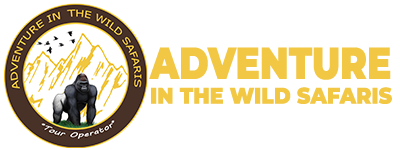
When is The Best Time of the Year for Gorilla Trekking?
- March 14, 2024
Adventure in the wild Safaris
- Blog , Gorilla trekking
When is the best time to book your gorilla trekking tour?, When is The Best Time of the Year for Gorilla Trekking?
Best time to visit mountain gorillas in Uganda, when to track Uganda Mountain Gorillas
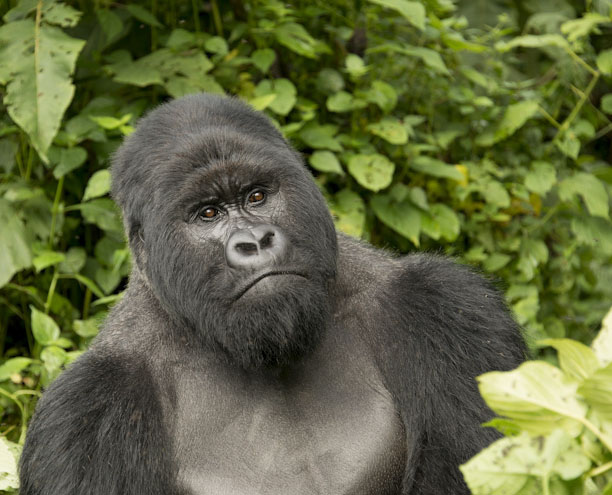
Best time to trek the mountain Gorillas in Rwanda, when to book your Rwanda gorilla tour
Best time of the year to visit mountain gorillas in Rwanda – Just like Uganda, the months of June, July, August, early September, December, January and February are the busiest months for gorilla trekking, and many travelers book their gorilla trekking tours during this period. It should however be noted that the altitude and landscape of Rwanda makes it more rainy than Uganda, and Rwanda therefore receives more rainfall as compared to Uganda. Therefore despite the time of the year you book your gorilla trekking tour, you should carry the equipment that will make your gorilla trek easy even when it rains. These include hiking boots, gardening gloves, rain jacket, head gear, long pants / shirts etc Contact us to find out more about what you need to carry for your gorilla trekking tour in volcanoes national park.
When to book your Gorilla trekking tour / permits for Uganda or Rwanda
It’s advised that you book your gorilla trekking tour at least three to four months in advance, this will enable your travel agent to secure your gorilla trekking permit when they are still available. In some cases where the permits are on so much demand it’s even recommended to book six months in advance, this gives your travel agent ample time to book your accommodation, and gorilla trekking permit to guarantee your best travel experience. Some of the months in which you should consider booking your tour six months in advance include July, August, and December.
Why to book your gorilla trekking tour in Advance
When you inquire, and start planning for your gorilla trekking tour in Advance, you will have a variety of options to choose from in terms of tracking sector, Accommodation and dates. This is because the permits, lodges and best gorilla trekking sectors normally have permits for most dates if booked at least 6 months in advance.
Related Posts
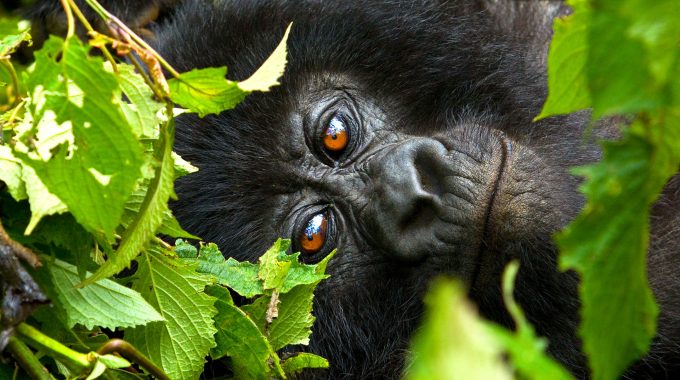
Gorilla trekking in Africa is one of the activities on the bucket list of travelers…
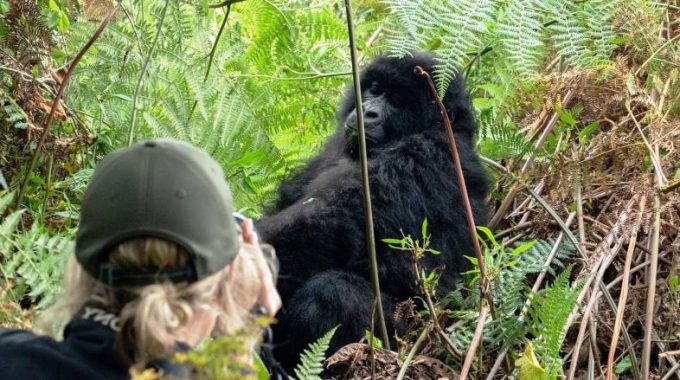
Budget Gorilla trekking Deals in Uganda, Budget Gorilla Safaris in Uganda, Affordable gorilla trekking tours…
Gorilla trekking is one of the most sought after activity in the world. The mountain…
- previous post: Chimpanzee habituation in Uganda
- next post: Explore The Pearl of Africa
APRIL SALE: Book now and get up to 60% off!
Gorilla Tours & Trips
Gorilla trekking finds its way on travellers bucket lists more and more these days. The best countries to see mountain gorillas are located in Africa: Uganda and Rwanda make the perfect destinations for a gorilla safari adventure! Discover the best gorilla tours on TourRadar.
250+ Gorilla Trekking tours with 466 reviews

- Gorilla Trekking
- Christmas & New Year
3-Day Gorilla Trekking Mist and Batwa Experience
We had a fabulous time on this trip. Our guide Arthur was very knowledgeable and friendly. The lodge we stayed it was located in the rain forest, it was lovely. The food was definitely a highlight. The Gorilla trekking was very well organised and really was absolutely amazing! Will be recommending to all!!

- Hiking & Trekking
Express Gorilla Safari in Uganda
It was the most incredible experience in my life! Adili was the best guide ever. Acommodation, transportation, transfers, and the trek in itself were perfect. I really recommend Ubuntu Voyages, It's really worth it!!!
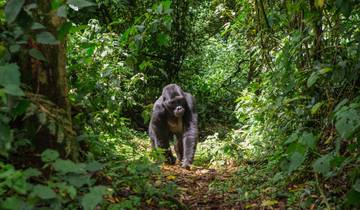
Glimpse Of Gorillas
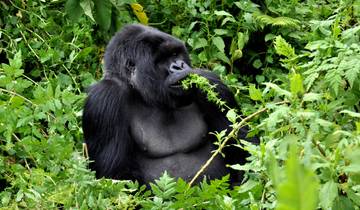
Uganda to Rwanda: Gorilla Treks & Safari Drives
Gorilla experience was amazing and accommodation was better than I expected.

- Overland Truck
Gorillas, Game Parks & Beaches
Best Intrepid trip yet! Thank you. Perfect balance of camping and sightseeing at a good rate. Tour leader top notch. Well looked after and enjoyed every moment. Never dull.

The Absolute Safari
My partner and I have just finished an 8 month trip around the world ticking off 30 countries across Europe, Africa and Asia. Africa has always been a dream but we were a bit worried about spending such a long time with a tour company as we enjoy our independence. Our time with Absolute Africa however was the absolute highlight of our trip! Everything about this tour was absolutely amazing and we will never forget our time in Africa. The tents easily became our home with comfy bed mats, the food was delicious and plentiful, the tour leader made our time special, and there were so many activities to suit everyone. We have been on a few tours which seem to focus on trying to get more money out of you which as budget travellers we hated, but Absolute Africa really understand that everyone has different and often limited budgets. The type of people that travel with Absolute Africa are like minded and you soon develop some amazing friendships. I can't speak highly enough of this 73 day tour and would recommend to all.

Uganda Overland: Gorillas & Chimps
It was a very different experience from any travel I’ve done before and was a little outside of my normal comfort zone but both the guides and fellow travelers were awesome, very helpful and very patient.
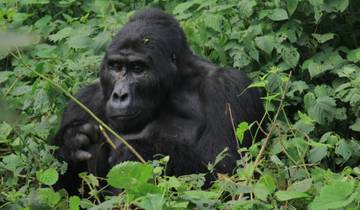
10 Days Experience Uganda’s Exclusive Gorillas and Wildlife ( Private tour)
This was a wonderful experience for us. We could not ask for more. Mukisa Safary have wonderful tour guides and a very responsive management. We traveled with John and Mastula who are very knowledgeable and easy to travel with, and Richard was doing above and beyond to accommodate our requests
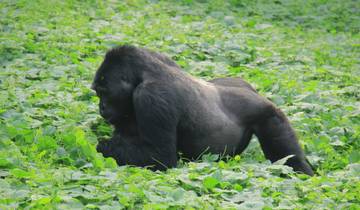
16 Days of Intensive Adventurous Safari through Magical Uganda and Rwanda ( Private tour)
I had the most incredible experience with Mukisa Safaris. This was a solo adventure 23 day slightly customized tour of Uganda and Rwanda, where I wanted to spend a few extra days driving around Rwanda on top of an all-encompassing tour of Uganda. From first contact with Richard, everything was handled completely professionally and seamlessly, and responses and tour modifications were sent over almost immediately, as I fine tuned my trip, which really help plan (they can do economy / premium accommodation options, as well as customizing your tour exactly how you want) After being picked up from the airport, everything was handled to such perfection, and I felt completely safe the entire time, while we toured the most remote parts of the countries, exploring wildlife, rural villagers, and much more. All hotel bookings and transportation was handled by Mukisa, and I didn’t have to do a thing. We had a tour of Ziwa Rhino Sanctuary, Kidepo Valley, Murchison Falls, Queen Elizabeth, Chimpanzee trekking in Kibale, Gorilla Trekking in Bwindi, village tours, a 8 day hike in the Rwenzori mountains, and a few days in Rwanda to relax at the Lake Kivu and explore a bit more. My main goal was wildlife photography, and the vehicle was perfectly equipped having an open top for safaris. I captured some amazing shots of lions in trees, elephants, giraffes, monkeys, gorillas, chimpanzees, and local culture. They say Uganda has the Big 7 :) - add Gorillas and Chimpanzees My guides were Giraffe and Solomon. They were an absolute pleasure to have as companions for 23 days, having vast knowledge of the countries, national parks, culture, where to eat, and always providing insightful commentary as we traversed the lands. We always stopped over at great places to eat that accommodated an international diet, instead of packed lunches, however you can eat anywhere if you like. Any personal requests I had were always remembered, such as getting photos of certain subjects or areas, or searching for certain foods (Samosas are my favorite). Water always in the car, and they even a travel adapter for the Rwanda power plugs, which I didn’t think about. So much appreciated was having 4G internet the whole time via hot spot. You can drive up to 8 hours some days and the internet was always reliable and fast! I cannot recommend Mukisa Safaris enough, they can completely customize any kind of trip you would like, are so hospitable, and I left Uganda with some of my favorite travel memories ever. And on top of that I now consider them as friends and family. I will definitely return! Uganda, as they say, The Pearl of Africa, is the most beautiful country to explore, and Mukisa Safaris made it the most enjoyable experience!

5 Gorilla and Chimps Safari
Peter has been a considerate, kind and attentive host. Places of visit, lodges and food have all been selected with a care and utmost consideration. This has been one of my best solo adventures and I have felt safe throughout. Highly recommended tour operator and Uganda is a beautiful country.
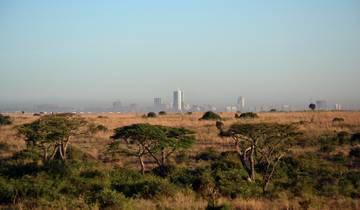
14-day Game Parks & Gorillas (Camping)
It was such an amazing experience and ee had such a helpful tour guid
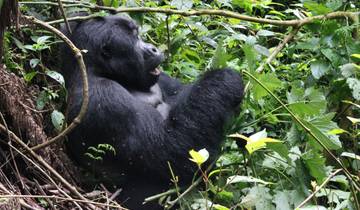
11 Days Uganda Plus Gorillas
This was a return to Uganda where we worked for two years as volunteers 50 years ago. Bosco provided a modified 11day tour for us to include more time in places we wanted to revisit. He was terrific. Everything worked out better than we could have hoped, from level of accommodation, meals, transportation, itinerary, his extensive knowledge and personality as a guide. He was fun to be with, especially important when in a vehicle for long hours.
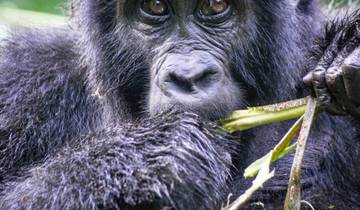
14 Days Uganda Gorilla Trekking, Big 5 & Big Cats Tour
I enjoyed an excellent experience on this 14 day tour. It provides the opportunity to see almost all of the African animals that you would hope to see on any safaris in Africa with the addition of viewing gorillas, chimpanzees, and golden monkeys close-up in beautiful jungle environments. The tour also provided the opportunity to enjoy the beauty of Uganda from the amazing countryside landscape to the fascinating people that live there. I have traveled in several other African countries on previous safaris and adding this tour to my resume allowed me to have a more total experience when is comes to enjoying all that Africa has to offer in terms of its rare animals and stunning environments.
- 10% deposit on some dates Some departure dates offer you the chance to book this tour with a lower deposit.
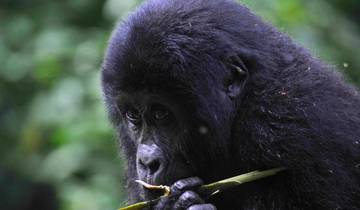
4 Days Uganda Gorilla Trekking, Chimps, Big 5 & Big Cats Safari
Nicholas the managing director of Devine African Safaris came highly recommended from my brothers who used their services in 2019. We contacted him and from his timely and detailed response, we knew that we were in the hands of a professional. We agreed to the 4 days safari and gorillas tracking in Uganda where permits and lodging costs were substantially lower. Our guide William was knowledgeable and very accommodating. His expertise and friendly personality made our experience enjoyable. We made the right choice in selecting an experienced company with great vehicles and an experienced guide
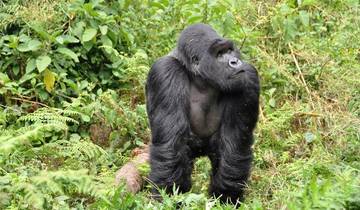
3 Day Uganda Gorilla Trek Budget Safari via Kigali
We had such a wonderful experience on the Gorilla Trek. Our guide, Godfrey was amazing. He was so insightful and made sure that we were comfortable and happy on every step of the trip. I honestly cannot fault him. He even found us a great local restaurant to eat lunch at on the way to Bwindi The Gorilla Trek was wonderful too, it was definitely an experience we won’t soon forget and we're very glad we chose to go with Bamboo Ecotours.
Gorilla Trekking Reviews
It was the most incredible experience in my life! Adili was the best guide ever. Acommodation, transportation, transfers, and the trek in itself were perfect. I really recommend Ubuntu Voyages, It's really worth it!!!
Destinations
- Africa (206)
- East Africa (283)
- Rwanda and Uganda (54)
- Tanzania and Uganda (14)
- Kenya and Tanzania (10)
Top Countries
- Uganda (166)
- Rwanda (45)
- Tanzania (5)
- 3 Day Tours (26)
- 7 Day Tours (60)
- 10 Day Tours (37)
- 2 Week Tours (34)
- 3 Week Tours (26)
- 4 Week Tours (10)
- 1 Month+ Tours (17)
Starting from
- from Entebbe (63)
- from Kigali (62)
- from Nairobi (37)
- from Kampala (27)
- Where To See Gorillas in the Wild (With Africa Map)
- 10 Best Gorilla Trekking Companies (with reviews)

Uganda Gorilla Tours & Wildlife Safaris

Best Time to visit gorillas in Uganda & Rwanda
It’s a lifetime experience trekking to see mountain gorillas but knowing the best time to trek these endangered species is very essential. In Uganda, mountain gorilla trekking is done in the tropical rain forests of Bwindi impenetrable forest national park and Mgahinga gorilla national park both situated in southwestern Uganda. On the other hand, Rwanda’s mountain gorillas are trekked in the volcanoes national park north east of the country. However in both countries, Mountain gorillas are trekked all year round but knowing the right time saves a trekker from either higher expenses (low season) or else helps to enjoy the trek (high season).
About Uganda the pearl of Africa is blessed with a conducive climate made up of two rainy seasons, the short one in October and November whereas the long one from mid March to May. The remaining months are dry though the current variations in weather patterns make it difficult to forecast the seasons.
High season This is in the months of January, February, June, July, August, September and December where there are lesser or no rains at all. Most travelers choose to travel during this season due to the positive weather. Due to this, there is always high demand for the gorilla permits requiring travelers to book for the permits in advance and pay 30% of the total cost as booking fee. The dry season is perfect for trekking mountain gorillas though very expensive and luxurious for budget travelers. More still mountain gorillas live in weathered regions with raised landscape, which make its climate cool all year round despite some thoughtful leg labor. However, trekking mountain gorilla in high season is expensive, a permit in Uganda costs 600usd compared to 450usd in the low season making it luxurious to budget travelers
Low season This is the best time for budget trekkers; many people have loved to travel during this season. During this time, trekking permits are offered at a discounted rate reduced from 600usd to 450uds for non-resident travelers. However, the season is known for heavy rains between the months of March, April, May and November, which rains may discourage most travelers.
Concerning lodge costs in this season, they are very favorable since occupancy rate is also low hence low prices charged to attract travelers. More still, with less people trekking mountain gorillas in the low season, the few who trek are allocated to different gorilla families, which provide them with close interaction without congestion. However despite the advantages during this season, rains make trekking difficult. The grounds become slippery and muddy, together with the showers and droplets, which wet trekkers.
Importantly still, even when low season is identified for rain, there has not ever been a whole day lost to the rain. This means that the sun shines shortly after the rain enabling trekkers to continue with the activity. In both Uganda and Rwanda, mountain gorilla trekking is done every day not minding whether it’s raining or shining. For all the years that gorilla trekking has been done, no single day has ever been cancelled because of bad weather.
Reminder: Trekking Uganda’s mountain gorillas in low season are pocket friendly since for travelers enabling them to save 150usd but this is not a case in Rwanda. The cost for Rwanda’s gorilla permit is 750usd whether in low or high season.
Conclusively therefore, despite the season, mountain gorilla trekking is the best time wildlife encounter a traveler can ever have.

Best Time to track Uganda gorillas – when to visit Uganda gorillas
Before booking a gorilla safari in Uganda or Rwanda, many travelers are always asking themselves, When is The Best time to track gorillas in Uganda ?
Friendly Gorillas safaris has put down well researched and true time to visit gorillas in Uganda. With this, you are able to better plan your Uganda gorilla trek with ease.
The Best Time of the Year for Gorilla Trekking in Uganda . The busiest and Best Times of the Year to encounter Uganda or Rwanda mountain gorillas are Mid-June through early October and Mid- December through March. Yes, you can best see gorillas in Uganda during the dry season which is also referred to as ‘High-Seasons’ or ‘Peak Seasons’.
During this season, the roads are rather easier to navigate through and there is no rain to inconvenience you during your gorilla trek.
You can, however, track Mountain Gorillas all year-long in Uganda – There are no seasonal closures when it comes to Gorilla Trekking, whether it’s a Rwanda or Uganda gorilla trek.

For many, the Best Time of the Year for others are the Off-Seasons, the Rainy Seasons when there are fewer people and lower prices on upmarket lodges. This tends to give many people maximum concentration when with gorillas.
During these months of April to May and November to Mid-December, it’s rather easier to find Uganda gorilla trekking permits and this works perfectly well in case you are making a late booking.
The term Rainy Season is not as bad for many as it may sound – the temperatures are milder, the gorilla national parks are even greener, wildlife often more abundant and the Gentle Giants of the Forest, the Mountain Gorillas are used to a bit of rain.
Even when you think it is the dry season, you should know that you can have the night or morning rains – that is why we tell our clients to bring a rain jacket or poncho and waterproof boots.
Best Time of the Year for Gorilla Trekking in Uganda – Rwanda – The Peak Seasons for Gorilla Tracking, considered the best months to see Uganda gorillas are June-July-August and September and then December-January-February.
The Uganda rainy season begins in March lasts through May – and then again October through November. What might surprise you is that it often becomes easier track Mountain Gorillas since they, especially in Volcanoes National Park in Rwanda and in Mgahinga National Park in Uganda move to lower elevations since there is plenty food to be found during the rainy season and Gorilla Treks have a tendency to be shorter in regards to time spent tracking them.
Boots are of necessity and waterproof ones at that. You will see that many of those guiding you on your Gorilla Trek in Uganda will be wearing rubber boots -many clients prefer waterproof hiking boots – waterproof day pack – long trousers, long-sleeved shirt – rain jacket or poncho. The long-sleeved shirt and long trousers also protect against nettles and not only rain. Be sure that your camera is well protected from the elements.
Use a porter to carry your day pack – by doing so you help a Rwandan or Ugandan family and during the rainy season with slippery trails – be sure to have a walking stick which is readily available in Bwindi Impenetrable Forest and Mgahinga Gorilla Park. You can even buy the Souvenir carved one and take it home with you.

Gorilla Trekking in Uganda ideally takes place 365 days of the year, rain or shine. The best time for Gorilla Permits is during the off-season months.
When it comes to the question of when is the Best Time of the Year for Gorilla Trekking in Uganda? – The reality is – Gorilla Tracking in both Uganda and or Rwanda is a year-round activity – there are no cancellations of Gorilla Trekking on Rainy Days, even during the Dry Seasons of the Year there can be Rain – Every Day is the Best Time of the Year for Gorilla Trekking – you are in a Rainforest, and yet after the morning mist evaporates – the sun comes out again.
Conclusion;
In conclusion, You can visit Uganda mountain gorillas at any time of the year. However the choice of whether you see gorillas in low or peak seasons may depend on factors like; when are you booking your Uganda gorilla trek?, Do you want to trek with the crowd, Do you want to trek with fewer trackers? Or even your budget.
We strongly recommend you track gorillas during the peak season however, as earlier put, you can choose any season that excites you.
If you need to book a Uganda gorilla safari , click here and choose an appropriate package for you. To inquire click here.
Plan your adventure
Got a question regarding this itinerary?
Related Safaris…

2-Days Dolwe Island Tour
Safari Highlights Day 1: Transfer from Kampala to Dolwe Island Day 2: Transfer Back to Kampala Detailed Itinerary Day...

Dolwe Island Tour / Lake Victoria
Dolwe Island Tour / Lake Victoria Enclosed in a freshwater lake is an Island scattered with incredible rocks designed...

9-Days Uganda-Honeymoon adventure
Summary of the itinerary Day 1: Pick up from Entebbe and transfer to Ssese Island. Day 2: A romantic invigorating...

- United Kingdom
- Uganda Travel
- Things to do
- Gorilla Trekking
Best Time to Visit the Gorillas in Uganda

The best time to visit the gorillas in Uganda is from June to August, and again from December to February. These are the driest months in Uganda which makes trekking much easier, although showers are possible at any time of year due to the equatorial climate.
When is the best time to visit the gorillas in Uganda?
The best time to visit the gorillas in Uganda is during the dry seasons from June to August , and again from December to February .
Gorilla trekking in Uganda can be done in both Bwindi Impenetrable National Park , and Mgahinga Gorilla National Park . Bwindi is by far the more popular option.
The temperatures in Uganda don't change much year-round, staying between 24°C and 30°C. The most important factor to consider is the rains - there are two distinct rainy seasons from March to May and September to November.

The dry season
The peak season is from June to August and December to February . This is when conditions are most likely to be dry. The days should be clear and sunny, making trekking more enjoyable. The drier vegetation is easier to hike through, and steep slopes are a lot less slippery.
Gorilla permits for these months sell out well in advance, so you should be planning at least 12 months in advance if you're looking to travel in peak season. There are limited accommodation options in the park , and these properties are generally high-demand, low-capacity lodges which also get booked up far in advance.
While these months tend to be drier, downpours are possible at any time of year due to Uganda's tropical climate .

The rainy season
The low season spans from March to May and September to November . The wetter conditions can make trekking more challenging and uncomfortable, but it is becoming increasingly difficult to predict weather patterns - so you might get lucky!
Showers are typically heavy downpours intermittently throughout the day, so you can still enjoy frequent sunny spells when the sky clears.
Accommodation prices are typically lower during this quieter period and permits easier to get a hold of (although they do still need to be purchased quite far in advance).

Ready to meet the gorillas?
The tours below showcase just some of what is possible. Use these itineraries as starting points, or to draw inspiration. Then get in touch, and let our expert team help craft the perfect itinerary for you.
Chimpanzee & Gorilla Fly-In Safari
Combine chimp trekking in Kibale Forest with mountain gorilla treks in Bwindi Impenetrable National Park. A well-paced highlights tour unlocking some of Uganda's most impressive experiences. Consider breaking up the journey from Kibale to Bwindi with a classic safari at…
Classic Gorilla Fly-In Safari
If you had the chance to trek through lush forests; to stand metres away from a family of Mountain Gorillas - deep in the heart of Central Africa - would you take it? This 4-day adventure works great as a…
Uganda's Epic Southwest
Open top road trips looping through Uganda's epic southwestern pocket; this is the safari adventure of your imagination. Track chimpanzees in Kibale Forest, go in search of gorillas in Bwindi, cruise the savannah plains of Queens, and look out for…
Gorilla Treks & Lake Retreats
Combine gorilla trekking in Bwindi Impenetrable National Park with beautiful lakeside retreats at Lake Mutanda. Tough treks and primate encounters paired with idyllic, calming lakes and oases make for an unforgettable experience in this remote pocket of Uganda.…
Luxury Gorilla Fly-in Safari
Board a Cessna light aircraft and head into the southwestern pocket of Uganda. Trek through the forests of Bwindi Impenetrable National Park in search of the mountain gorillas. Retreat to luxury lodges for sundowners and delicious food. Hard days, soft…
Luxury Safari and Gorilla Habituation
Spend 4 hours in the company of a gorilla family by joining the habituation trek. Combined with a luxury safari at Queen Elizabeth National Park, this trip offers truly once-in-a-lifetime wildlife…
Safaris & Gorillas of Uganda
Combine safaris in Murchison Falls National Park and Queen Elizabeth National Park with a 4 day gorilla trek in Bwindi Impenetrable Forest. Top and tail with overnights in the bustling capital of Kampala.…
Snow Capped Peaks & Mountain Gorillas
Trek the Rwenzori Mountains where forests morph into ice-clad mountain peaks, cut through jungle thickets to hang out with mountain gorillas, and finish your trip relaxing lakeside amongst the staggering beauty of Lake Mutanda. This is Uganda.…
Ultimate Gorilla Experience
Two visits to the gorillas in Bwindi Impenetrable National Park, moving through the forest along the most awesome trekking routes, and staying the night at the best lodges and exclusive camps in the park. This is Uganda gorilla trekking at…
Volcanoes, Gorillas and Great Lakes
Travel to the farthest corners of Uganda where towering volcanoes mark the border between the thick jungles of Mgahinga Gorilla National Park and the untamed vastness of central Africa. After trekking the gorillas in Mgahinga, head inland for a couple…
Ugandan Odyssey
The full western circuit complete with luxury lodges, gorilla and chimpanzee trekking, and the best safaris Uganda has to offer. Close out your adventure with kayaking and canoeing on the rapids of the river Nile.…
The Very Best of Uganda
The quintessence of Ugandan exploration. Start your adventure in the wild Kidepo Valley in the northern tip of Uganda before weaving down to meet the gorillas in southwestern jungles. Epic landscapes, incredible safaris, and luxury lodges; this is a proper…
Get to know us
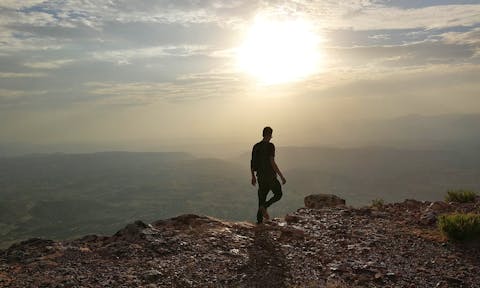
Booking with us
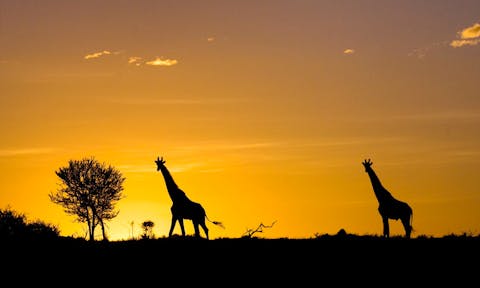
Values & Commitments
Thinking about visiting uganda.
We'll spend some time listening to your aspirations, then discuss the kind of experience that might suit you.
Next we'll discuss the options, shortlist the best trips for you and present you our impartial recommendations.
We'll place a 24 hour hold on your preferred option - without obligation - whilst we talk through the details.
Get in touch and we can help you understand your options, design an itinerary that's right for you, and then get you set up and ready to go.
This website uses cookies to ensure you get the best experience on our website. Privacy policy
We've spent decades in East Africa and can help you avoid the common pitfalls when travelling in this region. That's why hundreds of travellers choose to explore East Africa with Brilliant every year.
Best Time to Visit The Mountain Gorillas & Uganda
The best time of the year to visit uganda & go for gorilla trekking.
Uganda is known as a whole round travel destination to any tourist planning to travel. This is due to its climate and location to the equator. The other factor making Uganda a travel destination throughout the year is Lake Victoria and its unique weather patterns to the climate. Uganda mainly has two rainy seasons; the short season starts from October to November and the long rainy season starts from Mid-march to the end of May.
Therefore, the best time of the year when you should go for gorilla trekking in Uganda is June, July, August and September . If that is not possible, January and February should be relatively okay.
The average temperatures of Uganda are at 21.5 C and 71 F, these also drop at night time to around 54 F which affects the altitude. Rainfall in Uganda ranges between 1000-2000mm every year. However, throughout the year the skies in Uganda are clear which supports most safari vacations. These climate changes have brought about changes in weather patterns hence making it harder to predict the seasons of the tourism year.
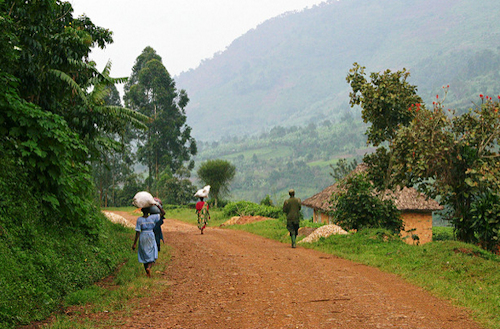
With the best months to visit Uganda , many tourists choose to travel from May to September to February since in these months, the amount of rain has reduced and it’s sunny in most of the destinations. December is one of the busiest months of the year in most national park and it’s advisable to book the accommodation in time to avoid disappointments. During the Christmas season, most Uganda safaris tourists plan to take vacations to national parks so it’s always a peak season in the month of December.
Visiting in low season is okay to many tourists since accommodation is cheap to encourage many tourists to travel even though it’s a rainy season. Visiting in this season also means that you will enjoy the jungle with relatively low crowds. It’s also said that February and September are good months for a safari vacation in Uganda since there are less tourists visiting and the lodges are not fully booked as such in the high season.
Rainy Season
The rainy season in Uganda affects people’s travels but that doesn’t mean that they don’t completely travel since this season is combined of both rains and sun shine. This means that the sun comes out as soon as it has just rained and most safari activities are able to be carried out without any disturbance. Mountain gorilla trekking as well as chimpanzee trekking goes on even during the rainy season and the national parks are fully in operation.
During the low season of March to May and October to November, most of the lodges reduce their rates to attract more tourists to book with them and this is an added advantage since even the gorilla permits are reduced to attract more tourists to Uganda.
More so, Uganda has got a raised topography and this means that its climate is cool, however, if you are planning to come for a gorilla trek, it’s really important to notice the easiest trekking conditions despite the low rates in the low season, this means that the best time to come for gorilla trekking is during the two dry seasons of January and February and from June to September.
Game viewing in all the national parks of Uganda is perfect in the dry season; from February and March, September and beginning of October. This is mainly because the wildlife species are concentrated around water bodies within those parks. Bird watching as an activity is best carried out between November and April when the migrant birds are present in the country but can also be carried out all year round. Tourists are however advisable to avoid taking vacations during the heavy rain months of April and May to be able to enjoy their vacations in Uganda.
GUIDE TO UGANDA’S TOURISM SEASONS
HIGH SEASON MONTHS: JUNE – SEPTEMBER
DECEMBER – FEBRUARY
LOW SEASON MONTHS: MARCH – MAY
OCTOBER TO NOVEMBER
What is the best time to track gorillas in Uganda or Rwanda?
Although tracking mountain gorillas can be conducted all year round in these two countries due to the somewhat damp seasons experienced by the national parks in which these gorillas stay, the majority of tourists prefer visiting from June to September as well as from December up to February.
This similarly applies in Uganda although there the rains begin in March up to May. Certainly the rains although not very heavy make it challenging to trek the sheer landscape. During that time the rain falls for just one to two hours in about 3 days of the week and fro the rest the sun is out. However even in the dry months of Uganda, there are some little showers experienced in Bwindi.
The seasonality of the trackers can as well be accredited to the overall weather back in the home countries. During summers for instance in Europe, the number of gorilla safari trekkers is high and then in winter it greatly lowers. Also there are some trekkers who take advantage of the seasonal discounts offered on the gorilla tracking permits. For example not long ago the Uganda wildlife Authority lowered the cost of permits by thirty percent for all non Ugandans for the months of April and May in 2014 so they will go for $350. The other months the gorilla tour permit will go for $600 with effect from 1 st January. A number of accommodation facilities in the areas where the gorillas are found as well will offer discounts in these months. Within Rwanda, the initial rains are experienced at the end of February, March, April as well as May, and for that reason most of the tourists don’t visit during that time since it is muddy and pretty wet while tracking the mountain gorillas. but during these very months, since it is raining, there is a lot of food for the gorillas on the lower slopes and also the temperatures are lower on the lower slopes. Because of that, the gorillas stay on the lower slopes since food is easily accessible and it is warmer. Therefore if you choose to track in these months, you won’t have a very long trek and actually most trackers find the gorillas just after two hours of trekking meaning by 2:00pm they are back at their lodge.
No matter what your explanation is, experience reveals that gorilla trekking can be enjoyed all year round and you will surely enjoy a great experience.
Best Time to Visit Rwanda Best Time to Visit Kenya Best Time to Visit Tanzania
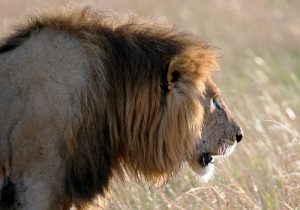
Best African Safari Countries & Beautiful Destinations , Top Picks 2024
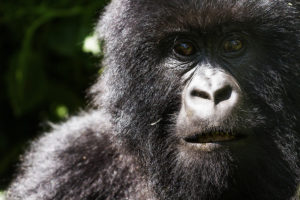
Gorilla Trekking Rwanda Vs Uganda Vs Congo, Comparing Best Gorilla Safaris in Africa
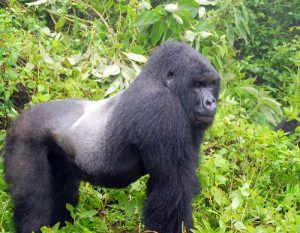
Gorilla Habituation Experience In Uganda – Spend More Time With The Gorillas
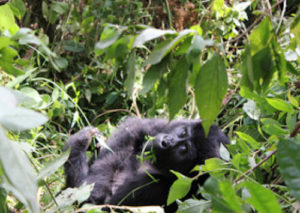
Gorilla Permits Uganda, Rwanda Booking, 2024 Cost & Tips
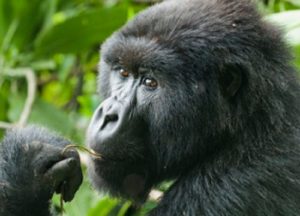
Where To See Gorillas in Africa, Best Gorilla Watching Holidays
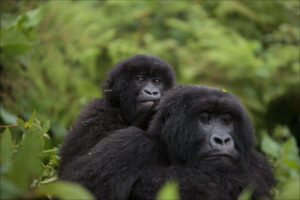
Congo Gorilla Trekking Safaris & Tours in Virunga National Park 2024
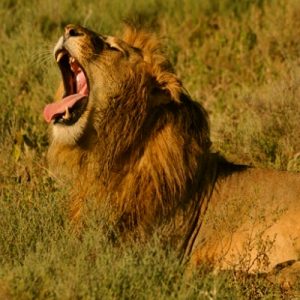
Best Tanzania Safaris in 2024

Uganda Safaris, Destinations, Itineraries & Safari Cost
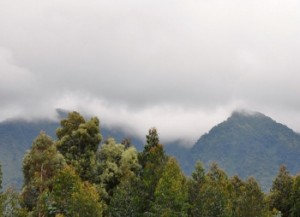
Guide To Rwanda Gorilla Trekking Safari Africa 2024
Ctph gorilla conservation camp.
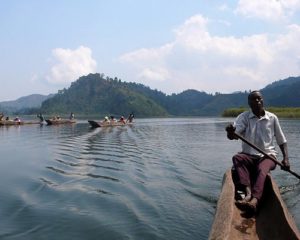
What Else to do after a Gorilla Safari, Chimpanzee Trekking, Lake Bunyonyi,
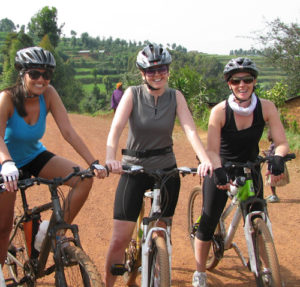
Cycling Tours in Uganda, Bwindi Biking Safari

IMAGES
VIDEO
COMMENTS
There are approximately 1,000 mountain gorillas left in the wild, divided across two distinct populations. ... Lighter rainfall at this time of year makes it the best time to visit for gorilla trekking since the terrain is easier to navigate and the gorillas themselves are often more active. October, March, and April are the wettest months and ...
A mountain gorilla trek often comes second on travel Bucket Lists to a classic Big 5 game drive in Kruger or Serengeti National Park. Which is understandable - getting to the gorillas takes more effort, more time and more expense than a traditional safari. But you know what they say: you get what you pay for.
Mountain gorilla permits in Uganda and DRC may be discounted in April and May. June, July and August are the best time to go gorilla watching especially if you're planning to combine travels in Tanzania thanks to the wildebeest migration taking place over the plains of the Serengeti. Do book as far in advance as possible at this time though ...
Kigali is in the middle with average temperatures around 21°C (70°F). Primate tracking in Rwanda is possible year round. The dry season between June to September and mid December through Jan is recommended for gorilla tracking. The wet season through March and April apparently affords better Chimpanzee sightings.
The price for a full tour, including permits, guides, lodging, and additional add-ons can vary wildly, but expect to spend per person around $1,000 on the low end and $15,000 on the high end for a gorilla trek. Prices can vary depending on if which country you're trekking in—permits are $700 per person in Uganda but $1,500 per person in ...
4. When is the best time to go Gorilla trekking? Uganda. January or February is the best time to see mountain gorillas in Uganda. It is one of the dry seasons which makes tracking and viewing wildlife easier. There are also fewer trekkers so less competition for gorilla permits. The trekking periods in Uganda are split into high and low seasons.
Within Rwanda, the initial rains are experienced at the end of February, March, April as well as May, and for that reason most of the tourists don't visit during that time since it is muddy and pretty wet while tracking the mountain gorillas. However, during these very months, since it is raining, there is a lot of food for the gorillas on ...
June, July, and August. June, July, and August are some of the best months to go gorilla trekking in Rwanda. It's the high season when most tourists like visiting the region because the weather is warm. There are no heavy rains this time of year, enabling you to quickly identify the hiking/trekking trails. Also, the mountains are not muddy or ...
It is a humbling experience to see the mountain gorillas in the bamboo forests of Volcanoes National Park. A gorilla safari in Rwanda doesn't come cheap. A gorilla permit costs US$1500 per ...
There are currently 12 habituated mountain gorilla families in Volcanoes National Park. Trekking groups are allocated a specific gorilla family to track and the number of people in each group is strictly limited to 8, which means that only 96 permits are available per day (see below for more information on permits). Best time to visit Rwanda
When to go gorilla trekking: quick reference. In my opinion, the best times to see gorillas in Rwanda & Uganda are during the dry (but hot) seasons between June-September, and December-February. High / peak season: June-August. Low season: April-May and September to November. Best weather: Between June-September, and between December-February.
What is the Best Time to Visit Rwanda Gorillas? Rwanda is one of the three countries in Africa known to be a natural habitat to the world's endangered mountain gorillas. These live in the Volcanoes national park lying in the Virunga Conservation area. ... So the mountain gorillas keep on the lower slopes where they find it warmer and get food ...
5 Reasons You Need to See Gorillas in Uganda. Mountain gorillas can only survive in the wild, so trekking into their native forests is your only chance to catch a peek. Sitting in silence on the ...
Don't stare into the eyes of the gorillas, as it may be misunderstood as an act of hostility. Smoking, drinking оr eating аrе nоt реrmittеd within 200 m of a gorilla troop. Children under the age оf 15 aren't allowed go gоrillа trеkking. Mountain gorillas are very protective of their young.
Largest Population of Mountain Gorillas: ... Ultimately, the best time to go gorilla trekking in Uganda largely depends on your personal preferences. If you prefer drier weather and easier trekking conditions, the dry season may be the ideal choice. ... Bwindi Impenetrable National Park is a must-visit destination for any gorilla trekking ...
Best time of the year to visit mountain gorillas in Rwanda - Just like Uganda, the months of June, July, August, early September, December, January and February are the busiest months for gorilla trekking, and many travelers book their gorilla trekking tours during this period. It should however be noted that the altitude and landscape of ...
Where to See Gorillas in Rwanda. The stunning Volcanoes National Park is situated in north-western Rwanda and covers 160 square kilometres (62 square miles) of prime rainforest, encompassing five of the eight volcanoes in the Virunga Mountains range. It is a mystical backdrop for immersive gorilla conservation experiences in Rwanda.
Gorilla Tours & Trips. Gorilla trekking finds its way on travellers bucket lists more and more these days. The best countries to see mountain gorillas are located in Africa: Uganda and Rwanda make the perfect destinations for a gorilla safari adventure! Discover the best gorilla tours on TourRadar.
The best time to trek mountain gorillas is in January, February, June, July, August, September and December but because of global warming it is even becoming very hard to predict when it is going to rain or not. Safari vacations and travel services designs itineraries in Uganda, Rwanda and the DRC with over 10 years of experience and we are ...
High season. This is in the months of January, February, June, July, August, September and December where there are lesser or no rains at all. Most travelers choose to travel during this season due to the positive weather. Due to this, there is always high demand for the gorilla permits requiring travelers to book for the permits in advance and ...
Friendly Gorillas safaris has put down well researched and true time to visit gorillas in Uganda. With this, you are able to better plan your Uganda gorilla trek with ease. The Best Time of the Year for Gorilla Trekking in Uganda. The busiest and Best Times of the Year to encounter Uganda or Rwanda mountain gorillas are Mid-June through early ...
The best time to visit the gorillas in Uganda is during the dry seasons from June to August, and again from December to February. Gorilla trekking in Uganda can be done in both Bwindi Impenetrable National Park, and Mgahinga Gorilla National Park. Bwindi is by far the more popular option. The temperatures in Uganda don't change much year-round ...
Therefore, the best time of the year when you should go for gorilla trekking in Uganda is June, July, August and September. If that is not possible, January and February should be relatively okay. The average temperatures of Uganda are at 21.5 C and 71 F, these also drop at night time to around 54 F which affects the altitude.